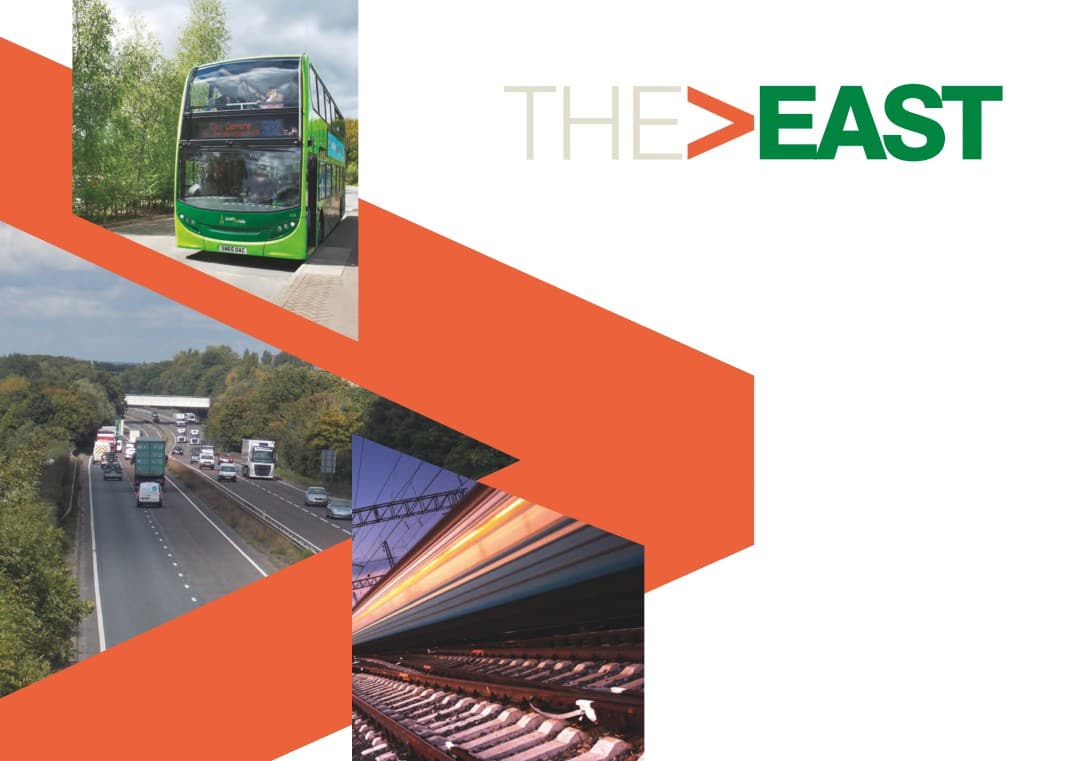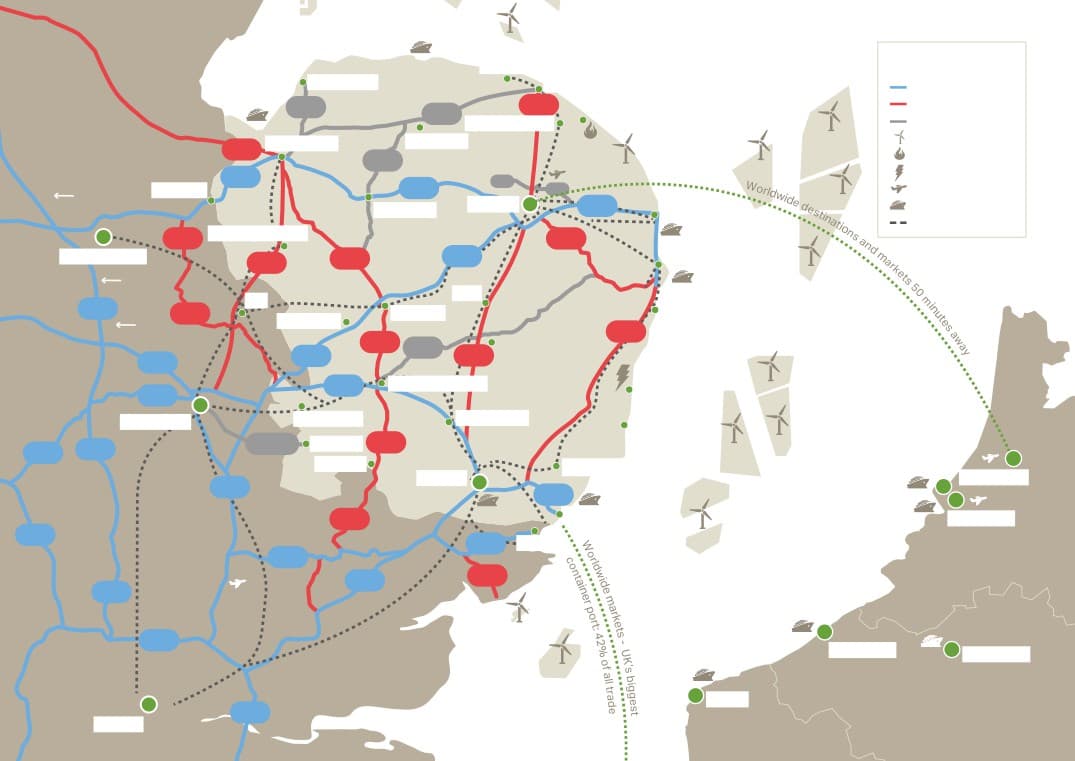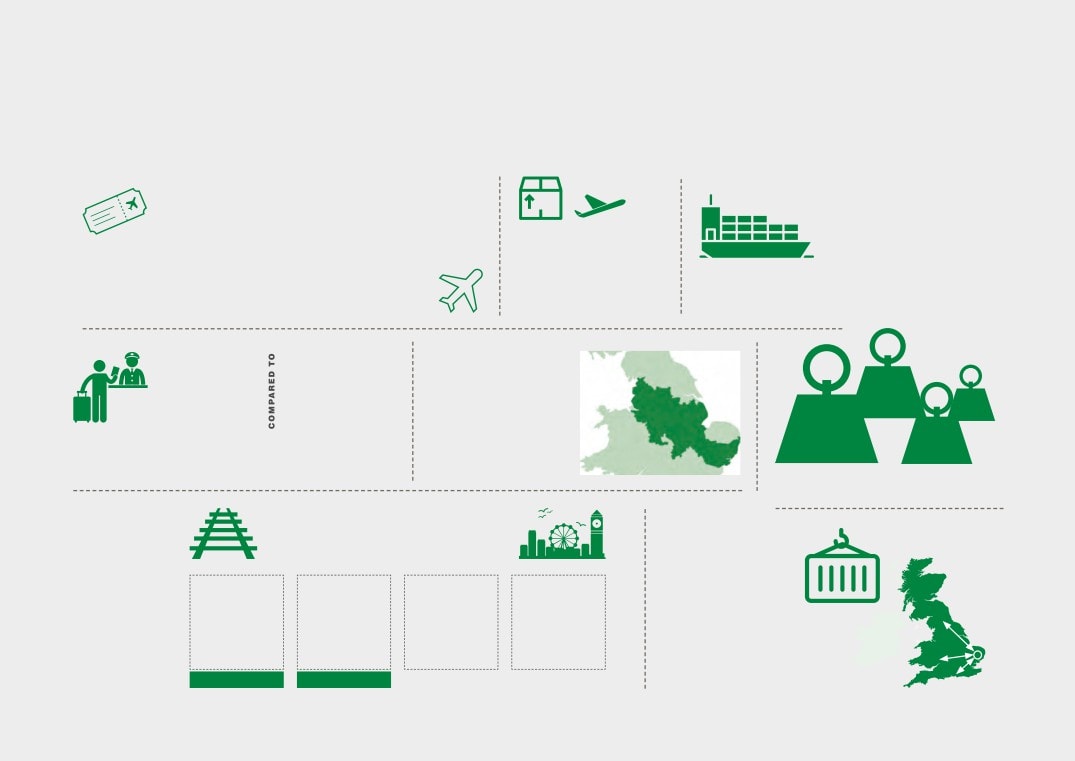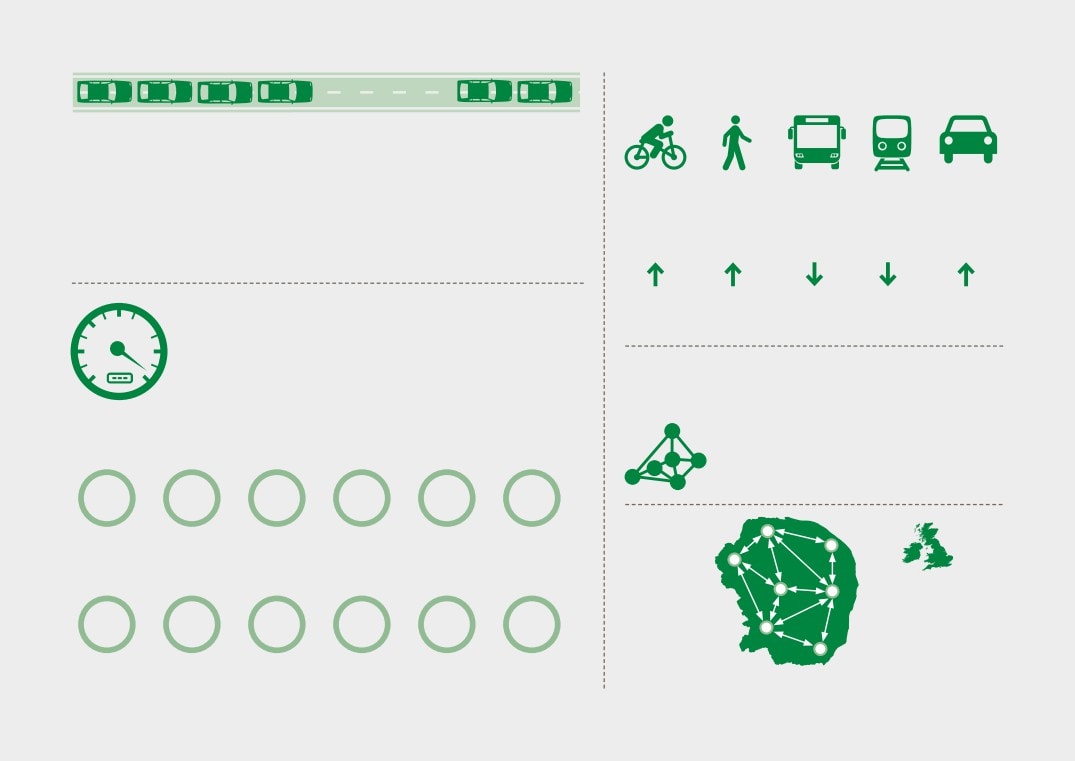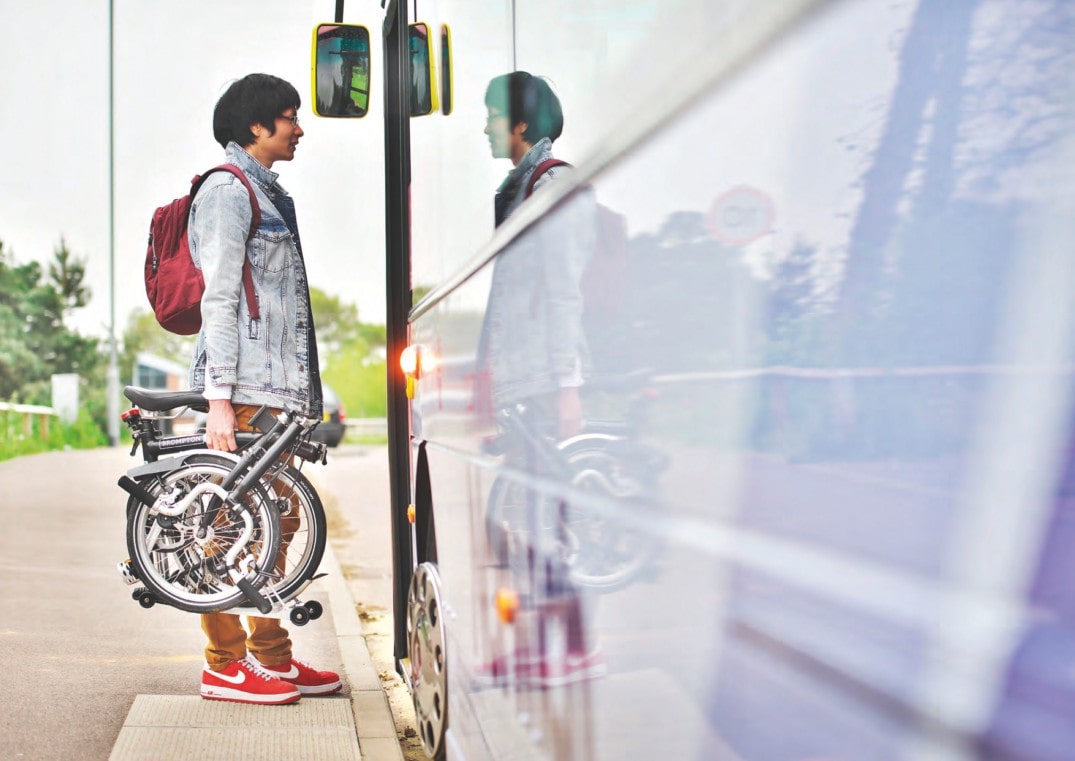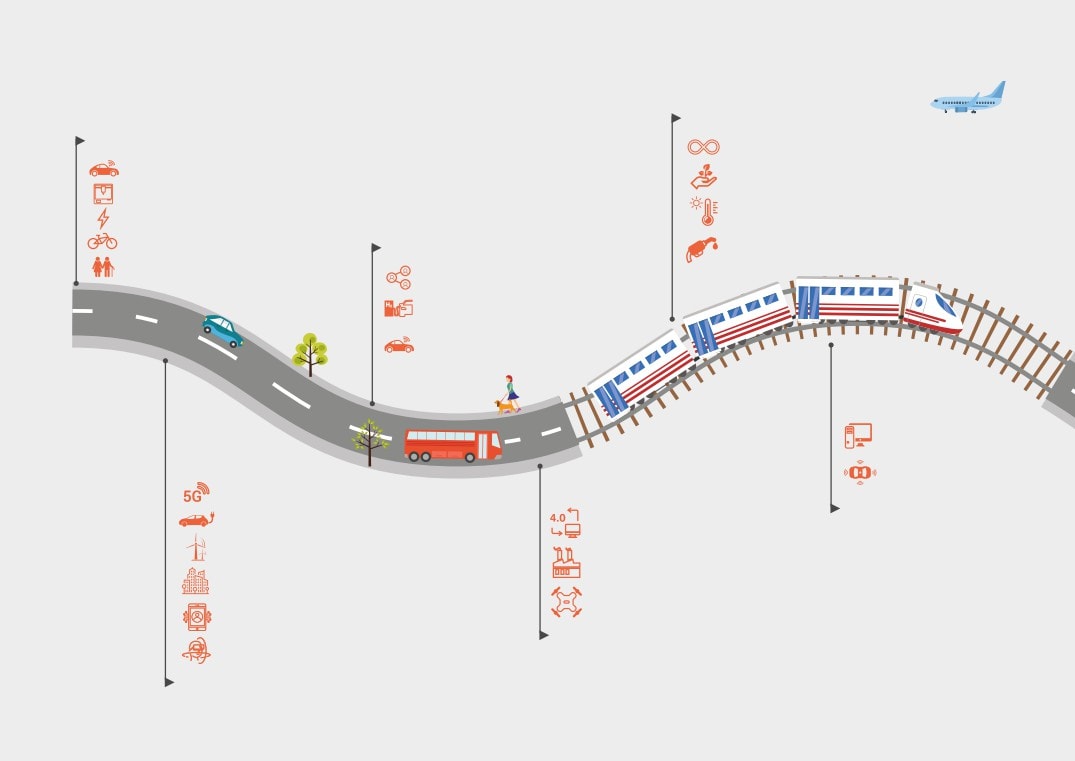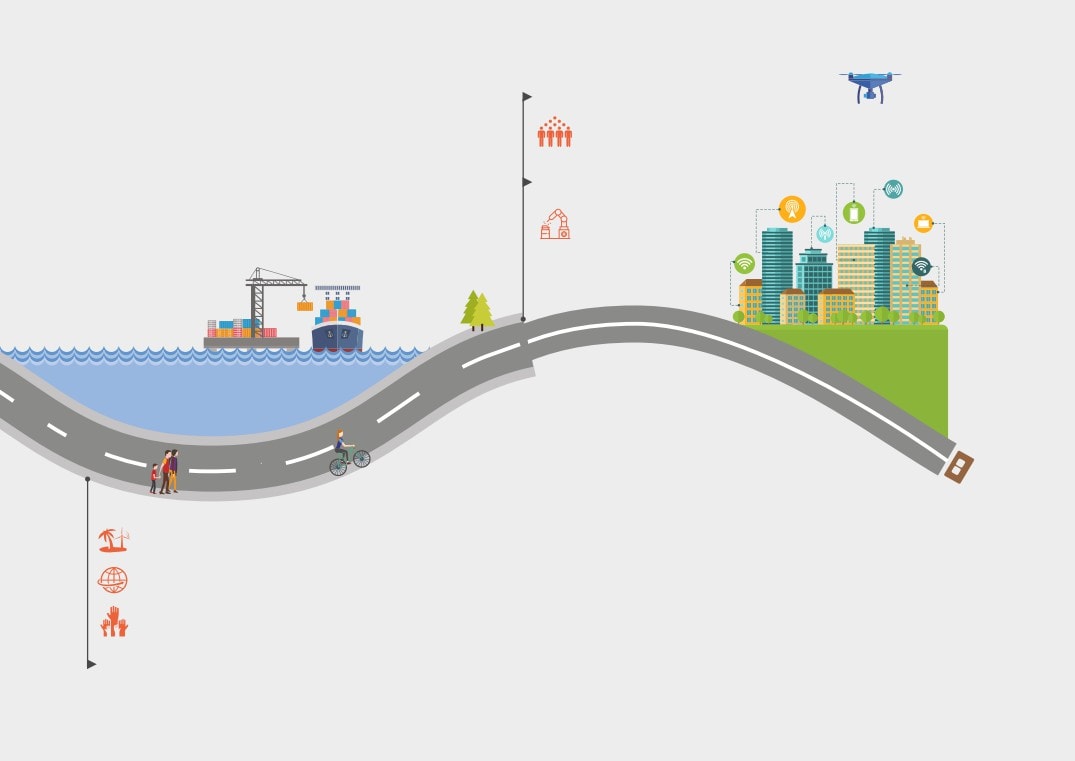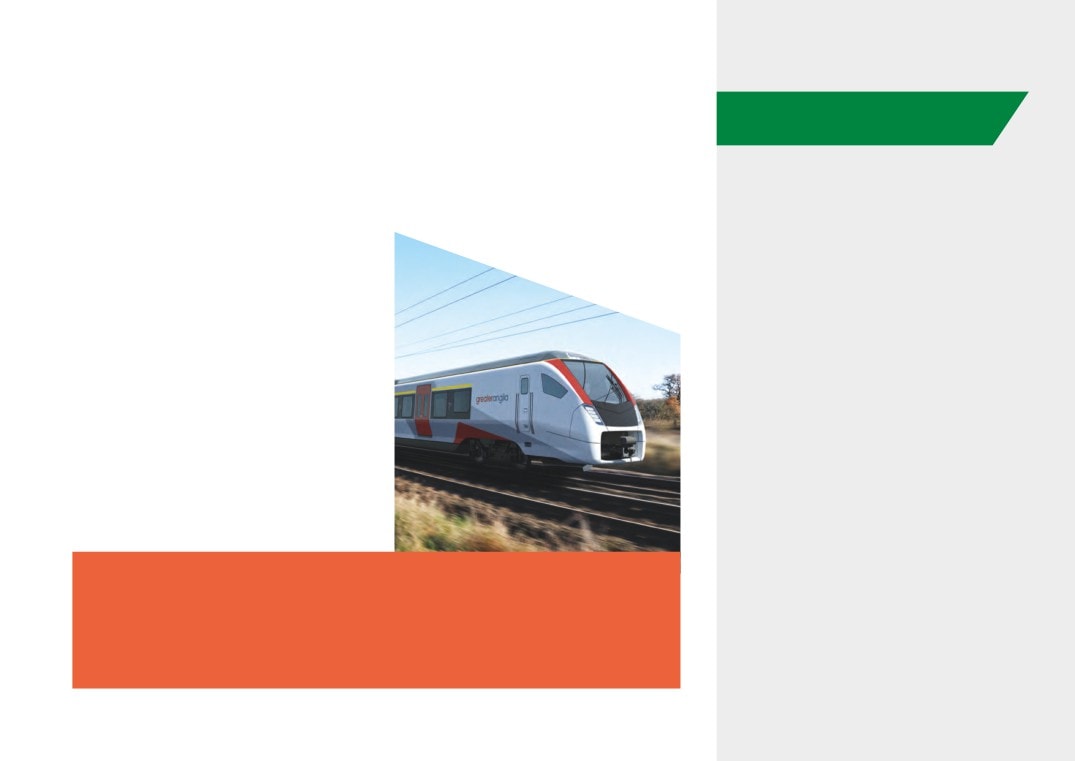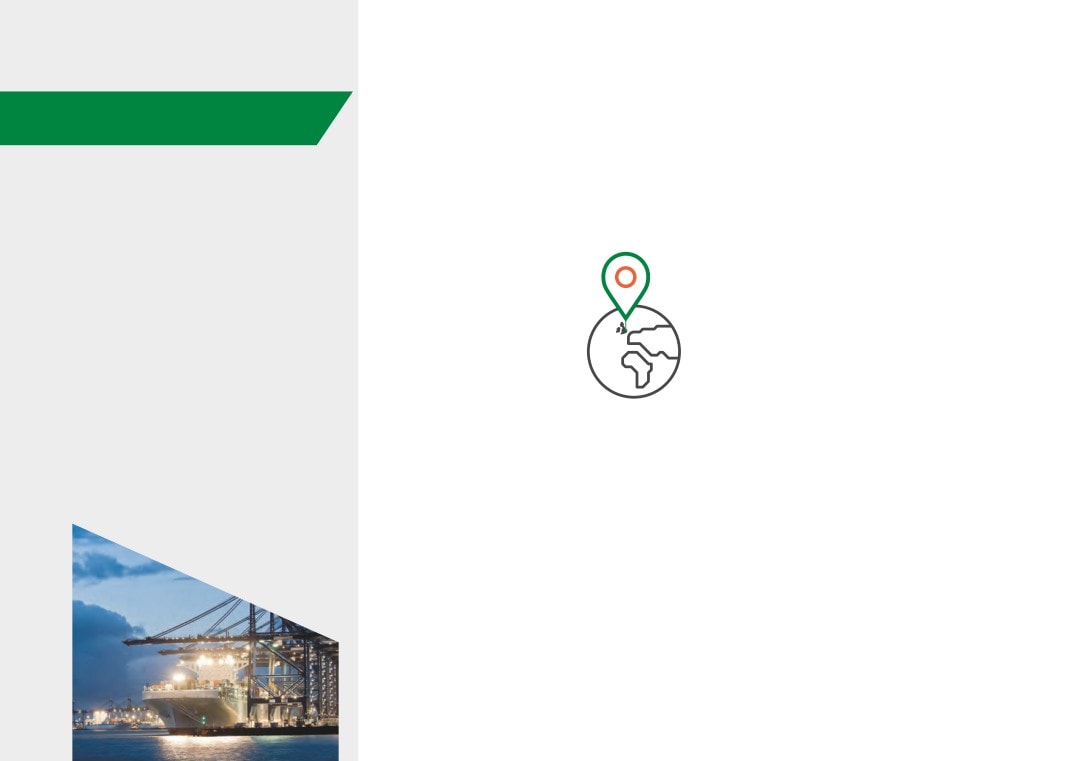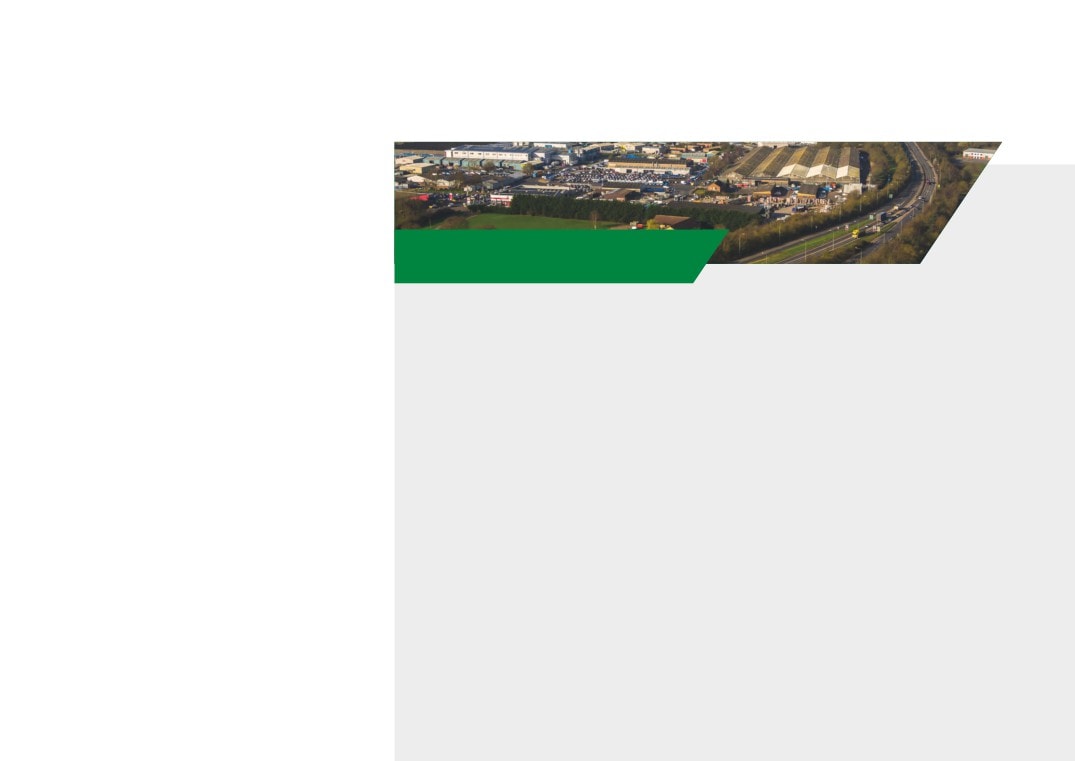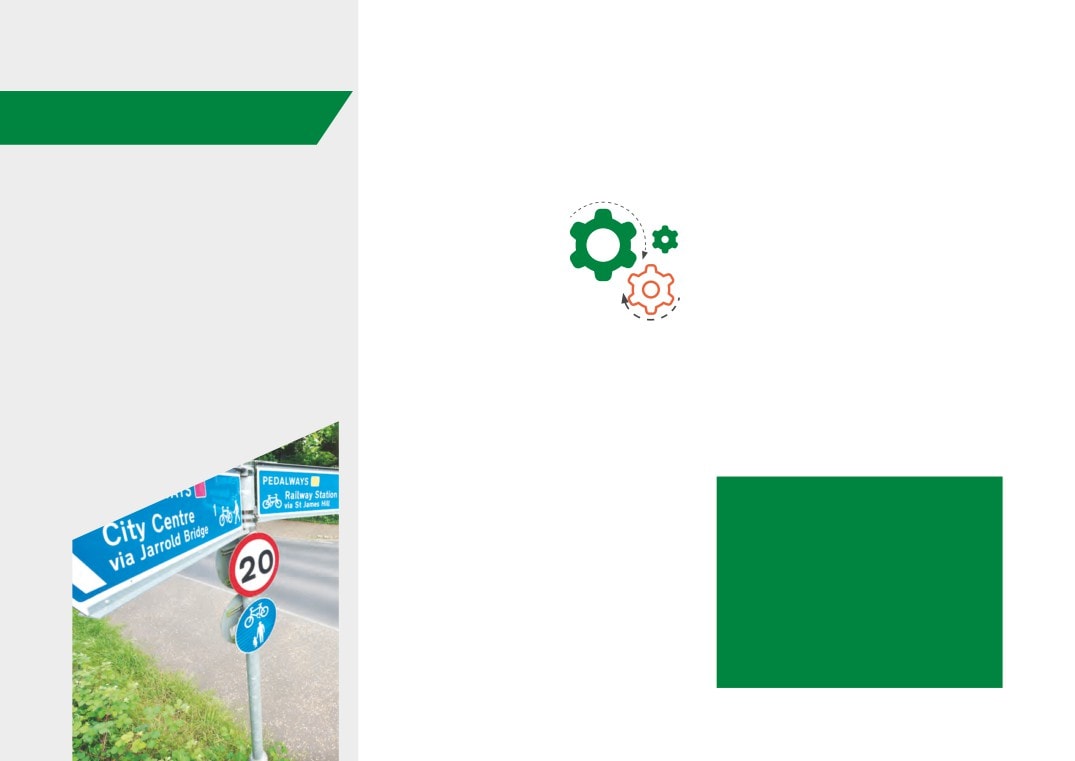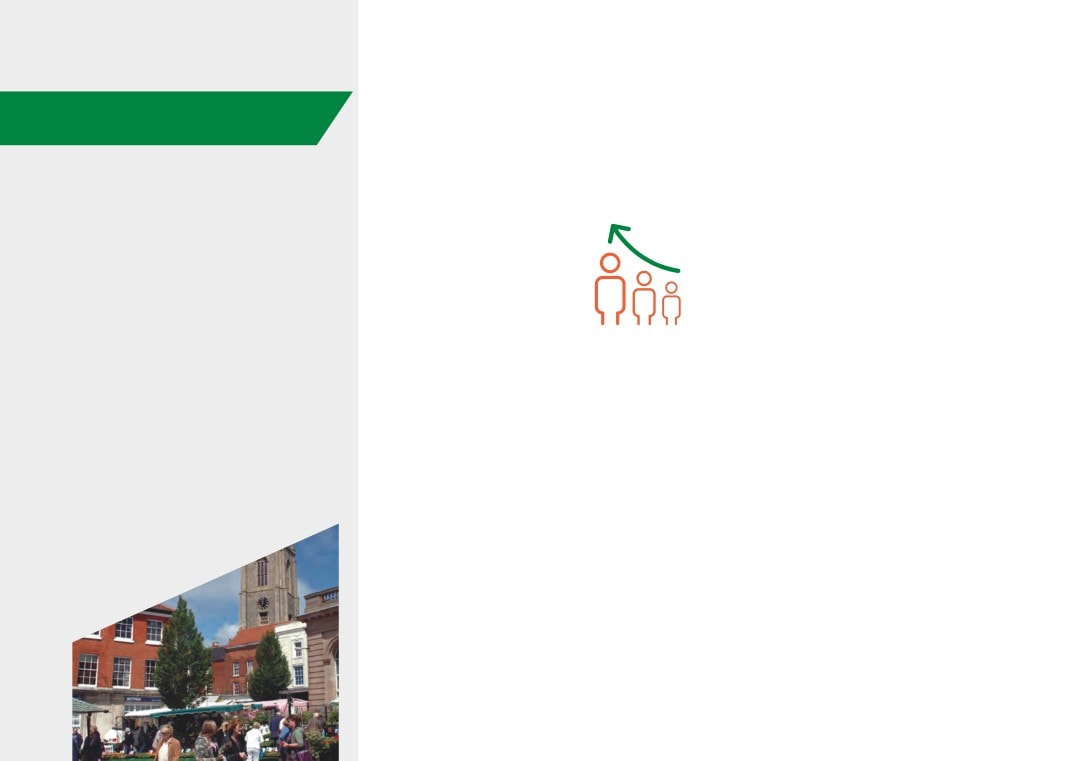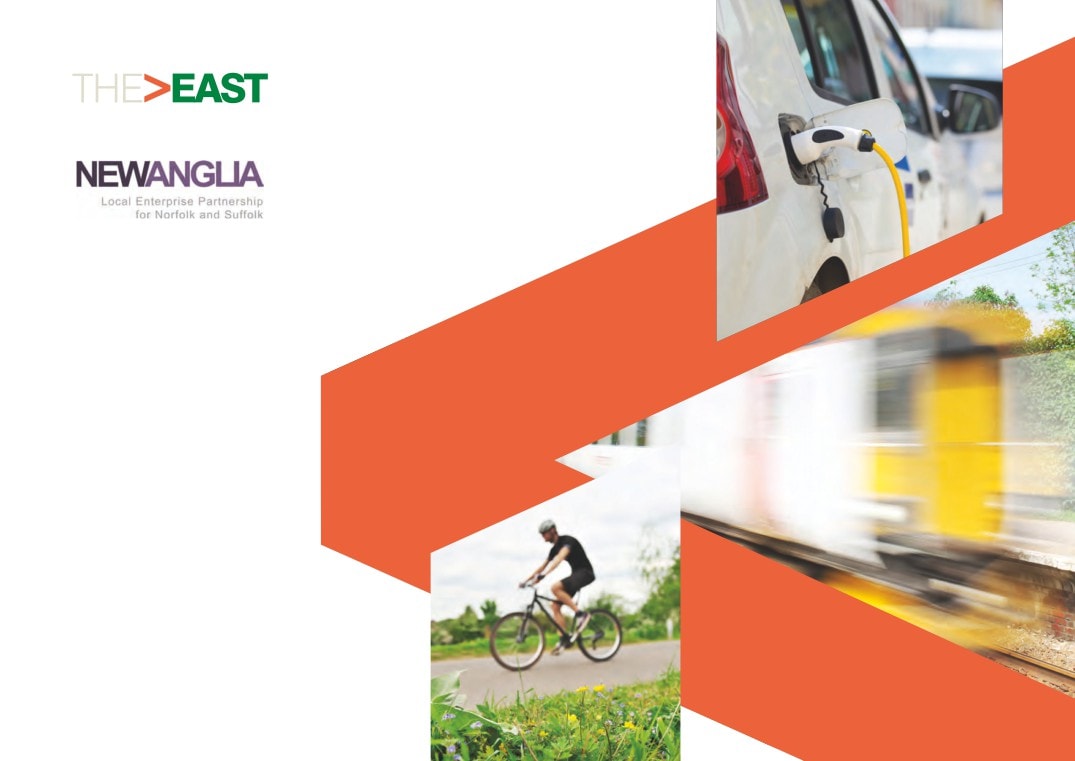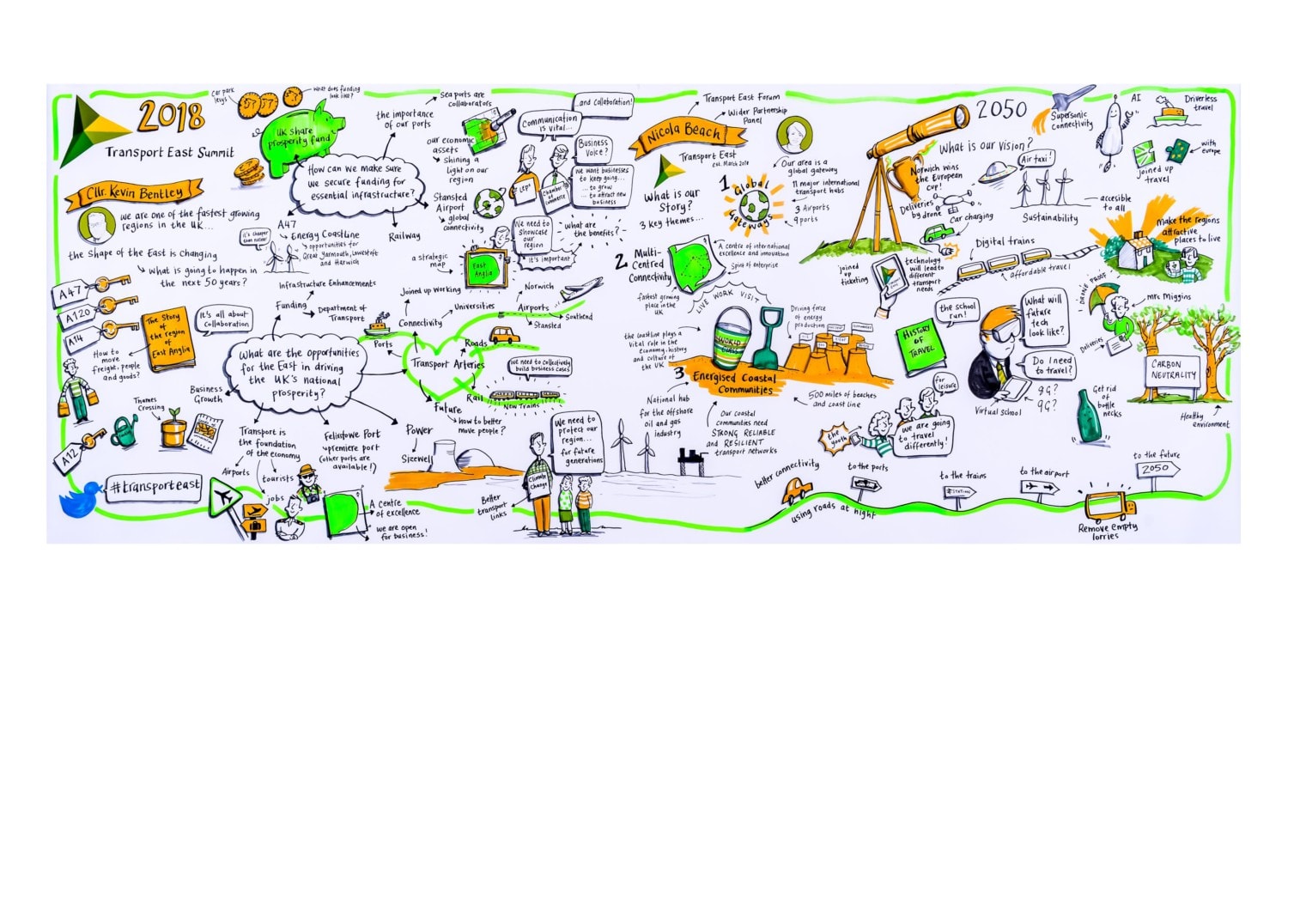New Anglia Transport Board
Connecting the East, Accessing the World
Agenda
9.00am - 11.00am, Tuesday,12 February 2019
George Hines Room, Wherstead Park, Suffolk, IP9 2BJ
9.00am
1.
Welcome and introductions
Chair
9.05am
2.
Minutes and matters arising:
Chair
Lower Thames Crossing response submitted
Transport East strategic narrative comments
requested
Invites to Chambers from Transport East sent
9.10am
3.
Terms of reference and purpose
Chair
Are we achieving our aims and objectives?
How do we measure progress against them?
9.20am
4.
Suffolk Chamber of Commerce view
Richard Perkins
9.40am
5.
BREXIT and the Local Industrial Strategy
James Allen
Presentation
New Anglia LEP
10.10am
6.
MEMBER ROUNDTABLE: how are you ‘Making
ALL
the Integrated Transport Strategy Happen’?
10.40am
7.
Strategic rail update - verbal
Graeme Mateer
10.50am
8.
Transport East update - verbal
David Cumming
10.55am
9.
Any other business:
All
New Anglia Transport Board Forward Plan
Date of next meeting - 9.30-11.30am, Norwich
Officer Contact
If you have any questions about matters contained on this agenda, please get in touch with:
Ellen Goodwin
07384 258662
1
New Anglia Local Transport Board
Meeting Note
9.00am - 11.00am Tuesday 27th November 2018
Cranworth Room, Norfolk County Council, Martineau Lane, Norwich, NR1 2DH
Board Attendance
Simon Amor
Highways England
Jamie Burles
Greater Anglia
Ali Clabburn
Liftshare
David Cumming
Norfolk County Council
Cllr Mary Evans
Suffolk County Council
Doug Field (Chair)
New Anglia LEP
Jonathan Cage
Norfolk Chamber of Commerce
Paul Davey
Hutchison Ports
Ellen Goodwin
New Anglia LEP
Hannah Grimes
Norfolk County Council
Rizwaan Hanid
Network Rail
Paul Horne
Suffolk County Council
Graeme Mateer
Suffolk County Council
Richard Pace
Norwich Airport
Jonathan Rudd
New Anglia LEP
Rajinder Sharma
Transport Systems Catapult
Chris Soule
Country Landowners Association
Cllr Martin Wilby
Norfolk County Council
Helen Wilton
New Anglia LEP
Apologies
Duncan Cale
EM Trains
Nova Fairbank
Norfolk Chamber of Commerce
Martin Fellows
Highways England
Larry Heyman
GT Railway
Richard Perkins
Suffolk Chamber of Commerce
Oliver Starbuck
EM Trains
Richard Tunnicliffe
CBI
1.
Welcome and Introductions
Doug Field welcomed Board Members to the meeting
2.
Minutes and matters arising Tuesday 18th September
The Minutes of the meeting held on 18th September 2018 were confirmed.
3.
Future Direction of the Board
Doug Field updated the meeting on the decision made at the LEP Board to
amalgamate the Local Transport Body and Board into a single Board tasked
with developing and implementing the Integrated Transport Strategy Delivery
Plan. Decisions regarding funding will be made by the Investment and
Appraisal Committee.
3
There were no questions and it was agreed that the Terms of Reference would
EG
be updated to reflect the change and reported back to the next meeting
4.
Updates
The meeting was provided with updates on major issues and developments.
Key points are as follows:
Norfolk CoC: met with Greater Norwich Local Plan team - concern about
integration of transport. NCC reassured that the work of the Local Plan and the
Norwich Area Transportation Strategy was aligned.
Suffolk CoC:
Campaign continuing in build up to RIS2 announcement in mid-2019;
HoC meeting with Roads Minister Jesse Norman MP to press case;
A14 Strategy Board under Mark Pendlington as new chair held;
New marketing material being prepared: ‘Britain’s Premier Trade Route’;
Liaised with Suffolk MPs’ on autumn budget ask;
HoC reception planned for 23 January 2019; and
A14/rail corridor study being developed.
A47 Alliance pushing the case for two schemes in RIS2: Acle Straight and
Tilney to East Winch dualling.
Current NCC consultation on the Norwich Western Link.
RIS2 response in autumn budget.
Norwich Airport Masterplan still in development. Working with the City Council
and making wider infrastructure links including public transport.
It was suggested that Transforming Cities ought to be wider than the Greater
Norwich area given commuting patterns1
Rail - The first new Greater Anglia train has been received in Norwich and
testing is due to being shortly with 56 more to follow. The service will start in
May 2019 and is a major step in the Norwich in 90 campaign. The new trains
will see a significant quality uplift for regional routes in particular. Current bid in
for digital signalling which would deliver further benefits.
Ports - concern was noted about business skills to complete Customs
Declarations post-BREXIT. The meeting discussed the matter and it was
agreed that this was not for LTB to pursue and members should contact their
MPs with any concerns.
Now the Felixstowe branch line is almost complete the number 1 infrastructure
priority of the Port of Felixstowe is Ely.
Liftshare - update on funding applications and the Board was advised that
4
Norwich would designated as a sharing city from early 2019. The meeting
discussed the challenges of lift sharing for under 18s due to safeguarding.
5.
Lower Thames Crossing Consultation
Ellen Goodwin advised that the consultation is now underway and a draft
EG
response for review and comment was presented. Board members agreed the
draft response be submitted without amendment.
It was noted that a response is also being prepared by Transport East which
will reflect our response.
6.
Ely area improvements - presentation
Rizwaan Hanid from Network Rail presented to the Board detailing the issues
faced in the Ely area and the proposed solution for addressing them in
particular around level crossings and the issues of building in an area of
environmental significance.
It was noted that landowners in the area faced different issues and these were
being addressed in consultation.
The meeting discussed the improved capacity targets and was advised that the
work was focussing on the capacity in the Ely area only as there were other
areas outside of the control of the project which would also affect capacity i.e.
Haughley.
Presentation to be circulated
EG
7.
Transport East update
David Cumming updated the meeting on the progress of the Transport East
programme and advised that work has begun on the production of a transport
strategy with a view to the strategy and the implementation plan being finalised
in mid-2020.
Graeme Mateer advised that and announcement on the Major Road Network
was expected from DfT before the end of the year. Norfolk County Council has
put forward the Long Stratton Bypass as an early scheme for consideration.
Work is ongoing to develop the supporting evidence base and views of major
stakeholders are being sought. The aim is to complete by June 2019.
Ellen Goodwin advised that the Transport East Strategic Narrative to support
our economic offer was included in the papers and asked for comments from
the Board at the meeting or at the summit on 17th December at Trinity Park.
ALL
The Board raised concerns that Transport East had limited communication with
other stakeholders. EG confirmed that this issue had been stressed at the
meetings and that the communications process was at an early stage.
Formal representation to be made from the body to Transport East to improve
EG
communications and ensure modal integration.
5
8.
Monitoring the Integrated Transport Strategy Delivery Plan
Doug Field asked if there were any questions on the paper included in the
pack. It was proposed that a different theme would be reviewed at each
meeting in the future. This was agreed by the Board.
9.
AOB
No formal AOB
Date of next meeting - copies of ITS to be distributed
EG
9.00-11.00 am, 12 February 2019
George Hines Room, Wherstead Park, Ipswich, IP9 2BJ
Future meeting dates to be secured
EG
6
New Anglia Transport Board
Tuesday 12th February 2019
Agenda Item 3
New Anglia Transport Board Terms of Reference and Purpose
Author: Ellen Goodwin
Summary
This paper looks to update the terms of reference of the Board in line with the LEP’s governance
review as outlined at the previous meeting - see item 2 for more detail.
Recommendation
The Board are asked to:
consider the Board’s purpose, aims and objectives;
approve the revised terms of reference for the Board; and
consider how the Board will monitor progress against the identified aims and objectives.
Background
At the meeting on 27 November 2018 Doug Field outlined the future direction of the Transport
Board. The draft meeting note states that:
Doug Field updated the meeting on the decision made at the LEP Board to amalgamate the Local
Transport Body and Board into a single Board tasked with developing and implementing the
Integrated Transport Strategy Delivery Plan. Decisions regarding funding will be made by the
Investment and Appraisal Committee. There were no questions and it was agreed that the Terms of
Reference would be updated to reflect the change and reported back to the next meeting.
Since the meeting, the previously agreed terms of reference have been amended and are attached
at Appendix A for the Board’s consideration.
This paper seeks comments from the Board on the proposed purpose:
The New Anglia Transport Board will ensure current & future transport networks meet the needs of
both businesses and residents in order to support economic development & growth.
It also seeks comments on the proposed objectives and expected outcomes:
Objectives:
The New Anglia Transport Board will provide strategic direction on transport issues by:
Acting as a forum for information and expertise sharing, discussion and debate
Acting as a powerful advocate for Norfolk and Suffolk on behalf of the New Anglia LEP
Maintaining, executing and monitoring the Integrated Transport Strategy Delivery Plan,
reporting to the Economic Strategy Co-ordinating Delivery Board
7
Directing the formation and work programmes of Task and Finish Groups to tackle specific
topics
Producing and executing a stakeholder management plan
Producing a high-level work programme summarising individual scheme progress
Offering recommendations for prioritisation of projects for delivery and subsequent
monitoring of outcomes
Expected outcomes:
A reliable, resilient and integrated transport network with improved capacity and journey
times, providing good connectivity both within and around New Anglia, and to other UK,
European and worldwide destinations
A Delivery Plan for the Integrated Transport Strategy for Norfolk and Suffolk, current and
valued by transport bodies
Central government understanding of the transport infrastructure needs and priorities of
Norfolk and Suffolk businesses and residents to support inward investment and growth
Finally, this paper seeks the Board’s view on how they wish to monitor progress against their agreed
aims and objectives.
Link to the Integrated Transport Strategy
The New Anglia Transport Board will provide a strong voice for Norfolk and Suffolk to ensure that
the best is secured for the area. It will also help to deliver the ambitious objectives set out in the
Norfolk and Suffolk Economic Strategy and the Integrated Transport Strategy for Norfolk and
Suffolk.
Recommendation
The Board are asked to:
consider the Board’s purpose, aims and objectives;
approve the revised terms of reference for the Board; and
consider how the Board will monitor progress against the identified aims and objectives.
Appendix A - draft terms of reference
8
Appendix A
New Anglia Transport Board - Terms of Reference
Introduction
New Anglia LEP (NALEP) is the Local Enterprise Partnership covering the geographical area of
Norfolk and Suffolk.
NALEP have ambitious plans for driving business growth and productivity in our diverse economy, for
communicating our offer to the world and for driving inclusion and skills. Norfolk and Suffolk are
leading places in the competitive global economy, with a large number of world leading competitive
clusters already based here.
A modern and efficient transport system is key to our future success. A mobile and accessible world-
class economy will ensure that New Anglia retains this enviable position, and will benefit thousands of
businesses of all sizes and open significant opportunities in our extensive supply chain network.
The New Anglia Transport Board will provide a strong voice to ensure that we can secure the best for
the area and deliver the ambitious objectives set out in the Norfolk and Suffolk Economic Strategy and
the Integrated Transport Strategy for Norfolk and Suffolk.
Purpose
The New Anglia Transport Board will ensure current & future transport networks meet the needs of
both businesses and residents in order to support economic development & growth.
The New Anglia Transport Board brings together key transport specialists, pooling transport expertise
across the region to help shape the future transport system. It will:
Understand the partners’ transport ambitions
Ensure the transport network satisfies the needs of business and residents both now and in the
future
Assess how NALEP and partners can best deliver the Integrated Transport Strategy for Norfolk
and Suffolk
Specific Activities/Objectives
The New Anglia Transport Board will provide strategic direction on transport issues by:
Acting as a forum for information and expertise sharing, discussion and debate
Acting as a powerful advocate for Norfolk and Suffolk on behalf of the New Anglia LEP
Maintaining, executing and monitoring the Integrated Transport Strategy Delivery Plan, reporting to
the Economic Strategy Co-ordinating Delivery Board
Directing the formation and work programmes of Task and Finish Groups to tackle specific topics
Producing and executing a stakeholder management plan
Producing a high-level work programme summarising individual scheme progress
Offering recommendations for prioritisation of projects for delivery and subsequent monitoring
of outcomes
Expected outcomes
A reliable, resilient and integrated transport network with improved capacity and journey times,
providing good connectivity both within and around New Anglia, and to other UK, European and
worldwide destinations
A Delivery Plan for the Integrated Transport Strategy for Norfolk and Suffolk, current and valued
by transport bodies
Central government understanding of the transport infrastructure needs and priorities of Norfolk
and Suffolk businesses and residents to support inward investment and growth
9
Governance and administrative methods
Powers
The role of the Board is an advisory one, bringing expertise and transport knowledge. It will feed into
the Investment and Appraisal Committee to enable them to devise, deliver and manage the relevant
programmes.
Composition of the Transport Board (Membership)
ABP
CBI, East of England
Country Land Owners and Business Association
Department for Transport
East Midlands Trains
Federation of Small Businesses
First Group
Govia Thameslink Railway
Greater Anglia
Highways England
Hutchison Ports
Ipswich Buses
Liftshare
Network Rail
New Anglia LEP
Norfolk Chamber of Commerce
Norfolk County Council
Norwich Airport
Peel Ports
Stansted Airport
Suffolk Chamber of Commerce
Suffolk County Council
Sustrans
Transport Systems Catapult
Format and Frequency of Meetings
Meetings will be generally be open to the public
Meetings will take place quarterly and will take place ahead of Transport East Forums. Venues
will alternate between Ipswich and Norwich
Format of meetings - Chaired by NALEP
Meetings are formally minuted, with agenda, papers and minutes to be published via the
NALEP website
Secretariat - New Anglia LEP will supply secretarial services, and meeting support in terms of
accommodation will be hosted/facilitated by Norfolk and Suffolk County Councils
Papers to be circulated one week prior to Board meetings
The Board will work together by consensus
10
New Anglia Transport Board
Tuesday 12th February 2019
Agenda Item 6
Making the Integrated Transport Strategy Happen
Author: Ellen Goodwin
Summary
This paper seeks the Board’s thoughts on how their organisation is contributing to the delivery of the
Integrated Transport Strategy.
Recommendation
The Board are asked to consider:
how their organisation is contributing to the delivery of the Integrated Transport Strategy; and
what high-level actions the Transport Board should collectively take a lead on.
Background
The Integrated Transport Strategy was adopted by the LEP Board on 23 May 2018.
One of the key themes of the Strategy was ‘Making it Happen: an accompanying Delivery Plan for
Norfolk and Suffolk to help gain the momentum needed to unlock and deliver, through innovative
means, the key strategic interventions identified by new and existing partners”
Appendix A outlines a high-level extract from the current working draft of the Integrated Transport
Strategy Delivery Plan.
The Board are asked to consider the following with respect the to delivery of the Integrated
Transport Strategy:
Why does it matter?
What have we tried already?
How strong is our evidence?
What do we keep coming back to?
What would success look like?
What is ripe for reinvention?
What are we missing?
What might we collectively prioritise?
What are the barriers we may face?
What do we want to go big on?
Link to the Integrated Transport Strategy
Outlined above.
31
Recommendation
The Board are asked to consider:
how their organisation is contributing to the delivery of the Integrated Transport Strategy; and
what high-level actions the Transport Board should collectively take a lead on.
Appendix A - Integrated Transport Strategy Delivery Plan - Extract
Appendix B - Integrated Transport Strategy
32
Appendix A
Theme: Connecting the East, Accessing the World/ Local and
Owner/
Action
Target
What is the output of the activity for 2018/19
Coastal
Lead
Required
date
Ensure the Port of Felixstowe continues to be the country’s
Engage DfT on England’s Port Connectivity Study
largest container port and that our other ports maximise future
Respond to UK Shared Prosperity Fund consultation
import/export and bulk cargo opportunities
Deliver better connectivity and encourage additional services to
Engage train operators and airlines
and from London Stansted and Norwich Airports and other
Engage with Transport East
international hubs outside the region, and the UK
Engage with Highways England regarding RIS1 projects
Engage with DfT and MPs on RIS 2 to elevate the East’s
Deliver a well-integrated Strategic Road Network (SRN) with
status
improved journey time reliability across the East and beyond
Engage with Transport East
Engage Highways England on technology deployment
wrt performance and operation
Commitment to Haughley delivery
Ely area OBC complete
Engage partners to find solutions for Trowse
Deliver a resilient and integrated rail network with improved
journey times and capacity to increase patronage
GEML SOBC started and stakeholders engaged
Engage in EW Rail consortium
Engage franchise operators regarding commitments
Influence peak transport demand to improve network capacity
Gather evidence
and reliability by 2023
33
Theme: Regional Connectivity and Our
Owner
Action
Target
What is the output of the activity for 2018/19
Priority Places/ Local and Coastal
/ Lead
Required
date
Deliver an integrated Major Road Network
Norwich Western Link: preferred route & potential funding
(MRN) with improved journey times and
identified
reliability between our Priority Places, through
Ipswich Northern Route(s): SOBC and consultation complete
the creation of an MRN Action Plan with
priorities for delivery, aligned with funding
A12 Suffolk Energy Gateway: programme entry
timescales, ensuring the network is kept in a
A1307 Haverhill-Cambridge: options appraisal including Mass
good state of repair.
Rapid Transit
Eye Airfield: planning and construction started
Encourage an affordable, smart-ticketed,
Evidence gathering - best practise, gap analysis, current provision
integrated public transport network with high
quality, multi-modal interchanges and
Engage stakeholders
innovative information to meet the needs of all
Transforming Cities Fund bid - round 2 - Norwich
to improve economic and social inclusion.
Deliver quicker and more reliable journey times
DCOs submitted and funding contributions identified and secured
in and around our Priority Places by ensuring
for new crossings.
the strategic case for infrastructure
Sudbury Congestion Relief Scheme: OBC complete
improvements is well evidenced and aligned
with relevant funding streams.
Beccles Relief Road open
Ipswich Northern Route(s) and Norwich
Haverhill Relief Road construction
Western Link as elsewhere
Support delivery of West Winch Housing Access Road
Support delivery of Norwich East-West Link Road
Suffolk’s Local Transport Plan reviewed and updated
Norfolk Market Town Network Improvement Strategies ongoing
EZ/sector groups to consider barriers & develop actions
By 2021, deliver a behaviour change initiative
aimed at encouraging greener and active travel,
Evidence gathering and stakeholder engagement - strategic policy
by expanding on similar successful projects &
objectives
initiatives to improve public realm and air quality
and to increase walking and cycling
34
What is the output of
Owner/
Action
Target
Theme: Agile to Change/Local and Coastal
the activity for 2018/19
Lead
Required
date
Deliver 100% superfast broadband by 2023 across Norfolk and Suffolk by continuing to
Successful RDPE bid
work through the Better Broadband for Norfolk and Better Broadband for Suffolk
programmes and working with BDUK and service providers to secure delivery of the
final 5%
Deliver ultra-fast broadband in our Priority Places by 2025
Evidence gathered and
gap analysis complete
Deliver FTTP for all places and businesses in Norfolk and Suffolk by 2028 as identified
Engage relevant bodies
in the National Infrastructure Assessment
to discuss potential
Deliver mobile connectivity improvements working with the Chamber of Commerce’s ‘No
Gather evidence
More Not Spots’ campaign
Deliver a 5G pilot in the East by 2020 by working with DCMS and network providers
Agree potential
locations for pilot
delivery
Gather evidence as
Consider options for home/hub working/learning/access to services/employment by
needed (Joseph
2021
Rowntree Foundation)
Over the next twelve months the LEP will work with its sector groups and the Transport
Promoting the East as
Catapult to map the needs of its key sectors and identify potential opportunities
being ‘open’ to innovative
(including Electric Vehicles and MaaS facilitated by systems and infrastructure) to
new technologies,
facilitate growth across these sectors and along key transport corridors.
focussing on opportunities
to facilitate growth in our
key sectors and along the
A11 and A14 corridor
using the marketing
materials and online portal.
EV ambitions reflected in
LEE Strategy Delivery Plan
and GSE Energy Hub
35
INTEGRATED TRANSPORT STRATEGY
FOR NORFOLK AND SUFFOLK
A STRATEGY FOR
GROWTH AND OPPORTUNITY
MAY 2018
KEY
Sheringham
OUR PLACE
Hunstanton
Cromer
Trunk Road
A140
Proposed MRN
A149
Bacton
A148
Local MRN priorities
North Walsham
Wind Farm
King’s Lynn
Fakenham
A17
Gas Terminal
A1065
Norwich
Airport
Nuclear Power Station
A47
A1270
Wisbech
A47
A1270
Airport
To the North
Norwich
A47
Great
Shipping Port
Swaffham
Yarmouth
Rail
Downham Market
A141
A146
Peterborough
A134
A11
Lowestoft
A10
To the
Midlands
Diss
Ely
A1(M)
Southwold
A132
Thetford
Mildenhall
To the M6
A12
A134
Eye
A143
A11
A140
A14
Bury St Edmunds
A14
Sizewell
A428
Newmarket
Stowmarket
Cambridge
Aldeburgh
A1307
Haverhill
A134
A1
A421
The
Sudbury
Woodbridge
Hook
Ipswich
Amsterdam
M11
A14
Felixstowe
A131
Rotterdam
M1
A120
Harwich
Netherlands
A120
A133
Stansted
A12
A1(M)
Airport
M25
Zeebrugge
Antwerpen
Calais
M25
Belgium
London
France
Norfolk and Suffolk Economic Strategy.
FOREWORD
However, our potential is sometimes constrained by
THE STRATEGY
journey times and capacity, which compound the
To create an
perception that our area is a ‘long way’ from the rest
Our Strategy looks ahead to the 2040s but
environment where
of the country.
focuses on the actions we need to take over
the next three to five years to help secure the
businesses
The New Anglia Local Transport Board partners have
foundations for long-term success. It is a
continue to
developed this Integrated Transport Strategy. It sets
dynamic and living blueprint to guide the work
flourish, we need
out our ambition, our collective goals for delivery and
and investment of many interested partners.
to further improve
how we might see them brought to fruition. It also
Together we have:
our transport
provides a robust foundation for the newly formed
sub-national transport forum: Transport East.
• Examined the evidence, making sure
infrastructure.
we understand our transport networks and
Effective transport
Most importantly, it sets out how our transport network
modal needs in detail and how we can
networks can help to
can help to continue to make Norfolk and Suffolk a
remain agile to future opportunities and
boost inward
great place to trade, live, work, visit and learn.
challenges
investment and
For the East to continue to thrive, we must work
enterprise creation,
together to develop a network that meets our
• Set challenging but achievable
aspirations both now and in the decades to come.
ambitions, based on evidence, that
as well as increase
DOUG FIELD
If implemented successfully future businesses will
describe the place and transport solutions
productivity by
Chair of
benefit from better connected opportunities for
we want for Norfolk and Suffolk
improving access to
New Anglia Local
markets and increasing
Enterprise Partnership
• Agreed the themes under which we will
value for money.
prioritise action and investment in transport
They can also help to unlock opportunities
improvements
for balanced and inclusive growth and
• Identified actions and measures
offer people better and safe access to
for success with partners, to drive
services, products and opportunities.
delivery and measure success
The future is changing rapidly. These changes will
affect our networks and the way in which we use
them. It is vital that our networks are innovative in their
response to these changes to ensure we embrace the
opportunity they present, to the benefit of everyone.
Reliable and resilient networks are a fundamental
building block to the ongoing success and growth
of our £35.5bn economy and in ensuring the East
© Mike Page
realises its future ambitions as set out in the
FOREWORD
3
1
NORFOLK AND SUFFOLK TODAY
The East is a geographically and
The area has important strategic connections with
in Newmarket and CEFAS (Centre for Environment,
London, Cambridge, Peterborough and beyond.
Fisheries and Aquaculture Science) in Lowestoft.
economically diverse area, with an
Key rail routes include the Great Eastern Main Line
Each of our key sector clusters, together with our other
established, growing and ageing
(GEML), the West Anglia Main Line (WAML), and the
sector strengths, need to be well connected in order to
population of more than 1.6 million people.
Felixstowe to Peterborough route which connects into
continue to be catalysts for innovation and opportunity
the East Coast Main Line. The Strategic Road Network
and to drive our strong and growing economy.
Exploiting an advantageous geographic position,
(SRN), via the A11/M11, A12/A120, A14/M6, A47/
Norfolk and Suffolk retain a strong commercial
A1 and A428/A421 and beyond to Oxford, provides
Other significant centres, including but not limited to,
relationship with the rest of the world. The Port of
connectivity to these locations as well as to
Bury St Edmunds, Haverhill, King’s Lynn and
Felixstowe is the UK’s major container gateway to
the Midlands, the North and the rest of the country.
Thetford, are the focus for our local economies.
the world, handling some 28m tonnes of imports and
Our economy will continue to rely on making sure that
Each has their own successful economy and
exports per year (42% of the country’s container traffic).
there is good connectivity to and from the East.
uniqueness and this diversity must be maintained
East-west links and maritime connectivity continue to be
in order to secure our ongoing economic success.
crucial to the ongoing movement of freight into and out
In addition, priority corridors have been identified as
Transport and connectivity to larger economic centres
of the country from both Felixstowe and the other ports
the Cambridge-Norwich Growth Corridor, with an
including Cambridge remains a key facilitating factor for
including Ipswich, King’s Lynn, Great Yarmouth and
abundance of high tech businesses; the A14 growth
their local economies.
Lowestoft.
corridor, between Felixstowe and Cambridge; the A47
growth corridor between Lowestoft and Peterborough
However, our transport networks can suffer from
Also looking outward, London Stansted Airport,
(projects included in the first Roads Investment
reliability and resilience issues, particularly during
within an hour’s reach of many parts of Norfolk
Strategy); and King’s Lynn and the A10 growth
periods of bad weather. They also have a number
and Suffolk, provides access to many national and
corridor to Cambridge. Ensuring reliable and resilient
of pinch-points that can contribute to the perception
international destinations. It currently serves 26m
connections will be critical to driving business growth
that Norfolk and Suffolk are a ‘long way’ from the rest
passengers a year (set to rise to 35m before 2023).
and productivity in the East.
of the country. Transport in the East must do all it
It is also the country’s third busiest freight airport
can to reduce these barriers to inward investment,
handling in excess of 220,000 tonnes per annum.
Ipswich and Norwich are the largest economic
business creation and productivity, recognising
Norwich Airport provides access for more than 0.5m
centres for our area with specialisms in the financial
business needs, whatever their size.
passengers a year to a number of regional airports and
services and insurance sector and ICT, tech and
the many energy installations in the North Sea, as well
digital creative at Adastral Park and Norwich. Coastal
as Europe and beyond, usually via Amsterdam Airport
towns such as Great Yarmouth and Lowestoft are
SOCIAL INCLUSION AND SKILLS
Schiphol. Easy access to these international hubs, both
also important centres of activity, particularly in the
by public and private transport methods, will help to
globally competitive energy sector. Together, they form
We must also consider how transport can drive social
ensure their ongoing success. The recently completed
part of the Norfolk and Suffolk Energy Coast along
inclusion and skills, using innovative and digital means,
Broadland Northway demonstrates the collaborative
with Sizewell, Bacton and the offshore windfarm clusters
as well as more traditional methods, so that people
local delivery of a project of national significance and
as part of the East of England Energy Zone. In addition,
can access education, training and labour market
has the potential to provide jobs, help businesses and
Norfolk and Suffolk has a thriving life sciences and
opportunities and are able to meet their full potential.
bring more than £1bn of economic benefits to Norfolk,
bio-tech sector clustered around Norwich Research
This raises living standards and social mobility and
as well as a high-quality link to Norwich Airport.
Park, the National Stud (the home of horseracing)
rebalances the economy.
4
NORFOLK AND SUFFOLK TODAY
NORFOLK & SUFFOLK
PROFILE AT A GLANCE
REGULAR SCHEDULED FLIGHTS
DEPARTING FROM NORWICH
AIRPORT PER WEEK
101
28M
STANSTED HANDLES
TONNES OF
DEPARTURES PER WEEK
FREIGHT PER YEAR
FROM STANSTED
220K
3,300
FELIXSTOWE PORT IS THE BUSIEST
50 MINS FROM
TONNES OF
CONTAINER PORT IN THE UK
NORWICH TO AMSTERDAM
FREIGHT PER YEAR
AND 7TH BUSIEST IN EUROPE
NORWICH
STANSTED
70%
10,000
490,000
1.2M
OF CONTAINERS
GREAT YARMOUTH
0.5M
PASSENGERS
PASSENGERS
LOWESTOFT
COMING THROUGH
PER WEEK
PER WEEK
FELIXSTOWE ARE
2.2M
1.0M
STANSTED IS 4TH BUSIEST
DELIVERED TO THE
IPSWICH
KING’S LYNN
AIRPORT IN THE UK
'GOLDEN TRIANGLE'
TONNES HANDLED PER YEAR
VIA OUR PORTS
SECURED RAIL SERVICE
IMPROVEMENTS WILL INCREASE
CONNECTIONS
330
RAIL
60
90
75
90
FREIGHT
MINS
MINS
MINS
MINS
IPSWICH
NORWICH
CAMBRIDGE
PETERBOROUGH
MOVEMENTS
TO
TO
TO
TO
LONDON
LONDON
IPSWICH
NORWICH
INTO AND OUT OF THE
PORT OF FELIXSTOWE PER WEEK
▼ 5 MINS
▼ 15 MINS
NORFOLK AND SUFFOLK TODAY
5
% MODE SHARE TRAVELLING TO WORK
SEVERE CONGESTION
REGULAR CONGESTION
A14
A11
- J55-J58 SOUTH OF IPSWICH
- BETWEEN MILDENHALL AND THETFORD
- BURY ST EDMUNDS AND NEWMARKET
(CAN BE SEVERE TOO)
4.5%
12.6%
4.1%
1.8%
74.7%
(J36-J38 AND J42-J44)
A47
A47
- BETWEEN NORWICH AND HONINGHAM
ENGLAND AVERAGE:
- GREAT YARMOUTH TO ACLE
- AT KING’S LYNN
SPEEDS FOR REGIONAL JOURNEYS SLOWER
3.3%
12.1%
4.9%
4.6%
73.1%
CYCLING
WALKING
BUS
TRAIN
CAR
THAN TO MAJOR NATIONAL CENTRES
FUNDING AND DELIVERY OF PLANNED
COMMUTING PATTERNS ARE PRIMARILY CONCENTRATED ON
IMPROVEMENTS NEEDS TO BE SECURED
TO IMPROVE THESE AVERAGE SPEEDS
NORWICH IPSWICH
A14 CORRIDOR
BY CAR, FROM NORWICH TO:
KING’S LYNN
33
36
37
41
51
54
MPH
MPH
MPH
MPH
MPH
MPH
SHERINGHAM
IPSWICH
GREAT YARMOUTH KING’S LYNN
CAMBRIDGE
LONDON
BY CAR, FROM IPSWICH TO:
COMPARED TO
34
36
37
49
49
51
MPH
MPH
MPH
MPH
MPH
MPH
6%
10%
TRAVEL VIA
UK AVERAGE IN ALL
FELIXSTOWE
NORWICH
LOWESTOFT
STANSTED
LONDON
CAMBRIDGE
PUBLIC TRANSPORT
NON-METROPOLITAN
AREAS
IN NORFOLK AND SUFFOLK
6
NORFOLK AND SUFFOLK TODAY
PLANNING FOR THE FUTURE
There are a number of significant socio-
economic trends which present various
challenges and opportunities for the East.
These will impact how, when and why we
access and use our transport network:
TECHNOLOGICAL
ECONOMIC
Significant and rapid future change, which will alter
The rise of the gig economy, local manufacturing
how, when and where infrastructure and services are
(including 3D printing) and the 'just-in-time' culture on
provided and accessed:
business models, e-commerce, freight and last-mile
• ‘Big Data’, Artificial Intelligence (AI) and
delivery.
cognitive thinking and self-learning systems will
improve transport operations and services and how
DEMOGRAPHIC
customers engage with them
A growing and ageing population, many of whom
may work longer, the impacts of net migration and the
• Automation and robotics have the potential to
ongoing trend of urbanisation.
improve maintenance and safety - The most visual
aspect of this change will be Autonomous Vehicles
POLITICAL
Devolution of decision-making, future economic
• Propulsion and energy decarbonisation will
uncertainty regarding national political decisions,
have air quality benefits but could negatively impact
changes in legislation, the impacts of globalisation
energy distribution networks
and the protectionism of markets.
SOCIAL
• Material science improvements will mean cheaper,
The rise of the sharing economy and the growth in
more functional and sustainable use within vehicles
The way the economy responds to these future
immediacy expectations will impact the traditional
and infrastructure
challenges and opportunities will have important
models of transport access, ownership and use,
implications for the area’s land use and transport
particularly in younger generations.
• 3D printing techniques have the potential to allow
strategy. Indeed, global trends will impact our
local production of components and products that
key sectors in different ways and it is important to
will likely impact traditional supply chains
recognise how to maximise the associated economic
and transport opportunities effectively. We have
• Shared mobility will provide agile alternatives to
considered some future scenarios for technological
traditional fixed public transport routes and car
and mobility changes on pages 12 and 13, while
ownership models, particularly in urban areas
recognising that their availability, application and
ENVIRONMENTAL
social adoption is difficult to predict, especially
Impacts of climate change, particularly in low-lying
considering the speed at which these developments
and coastal areas, scarcity of resources and the role
may occur.
of renewable energy.
PLANNING FOR THE FUTURE
7
CHALLENGES AND OPPORTUNITIES
Improving strategic connectivity across
supports each of these clusters to continue to drive our
addressing constraints through targeted investment.
competitive advantage.
However, more needs to be done to make sure our
the East, especially London, Cambridge,
transport network is truly integrated and agile to future
Peterborough and beyond, will help to open
Contributing to driving social inclusion and skills
changes.
up as yet untapped opportunities and help
uplift is another opportunity for the East. Transport
drive business growth and productivity.
and digital connectivity can help to improve access
to learning, both now and in the future. This means
Making the most of our advantageous location with
people will have the right qualifications and improved
The Government’s Industrial Strategy (and
respect to accessing global markets is another
access to opportunities, helping boost social mobility
its underpinning Clean Growth Strategy)
key opportunity for our area. Ensuring the ongoing
and living standards in turn. In addition, we must also
sets out Grand Challenges to put the UK at
success, access to and growth of the Port of
help to achieve modal shift, improve air quality, reduce
the forefront of the industries of the future,
Felixstowe and our other ports at Ipswich, King’s Lynn,
the impact of flooding and ensure we mitigate and
ensuring that the UK takes advantage of major
Great Yarmouth and Lowestoft, as well as airports at
adapt to environmental challenges.
global changes, improving people’s lives and
London Stansted and Norwich, will help to improve our
the country’s productivity. The first four Grand
Offer to the World, plus boost enterprise formation and
Our network must accommodate an ever growing
Challenges are focused on the global trends
inward investment in the region.
and ageing population. Digital technology will have
which will transform our future:
a part to play to help us reduce overall demand,
• growing the Artificial Intelligence and
Capitalising on our geographic diversity and meeting
thus improving access to services outside the more
data driven economy
the needs of our significant urban centres and market
traditional forms of transport.
towns, as well as our rural and coastal communities,
• clean growth
will ensure that the needs and aspirations of all our
We must stand ready to ensure our strategic ambitions
• future of mobility
communities and businesses, no matter their size,
are realised. We must be agile, encourage innovation
are realised. Our road and rail networks can help to
and look to exemplars to help guide the development
• ageing society
achieve this by improving capacity and journey
of robust, viable solutions to these changes. In
times, as well as reliability and resilience in times
doing so we will develop relationships with new
of strain.
and existing partners in relevant and growing sectors
to understand their needs and drivers and clearly
We must also help to ensure that the East continues to
articulate our vision for transport in the East, with
increase its contribution to UK plc. In doing so our
Transport East, in the short, medium and longer-term.
economic diversity must be maintained and enhanced
and our transport network can help to support our
Transport and digital connectivity is an integral part
world-leading competitive clusters in clean energy,
of the East’s economy, helping to unlock the area’s
financial services and insurance, ICT, tech and digital
substantial resources in land, labour and capital. It is
creative and life sciences and biotech to thrive.
therefore a significant driver of productivity. Addressing
Our other key sectors, for which Norfolk and Suffolk
connectivity issues is a crucial building block to our
has a competitive advantage, will also contribute to this
future growth and economic success. Working with
ambition. We must ensure that our transport network
our partners we have a strong track record of
8
CHALLENGES AND OPPORTUNITIES
CHALLENGES AND OPPORTUNITIES
9
INDICATIVE TIMELINE
MID 2030s
EARLY 2020s
Hypersonic airliners and
hyperloop enter service
Autonomous vehicles coming to market
Diminishing natural resources
3D printing cheap, fast and readily available
Warmer and wetter winters
Electric vehicles re mainstream
and hotter and drier summers
E-bikes widely and cheaply available
Petrol and diesel propulsion
LATE 2020s
being phased out
Populations over 65 increasing
Sharing economy expanding rapidly3
Hydrogen powered vehicles
becoming widespread
Fully automous vehicles
are available
Quantum computing
is commonplace
Autonomous mobility
is the norm
5G wireless becoming the standard
LATE 2030s
Connected vehicles are the norm
Web 4.0 mobility networks
Offshore wind supplies 4m homes
On-demand manufacturing more
cost-effective and commonplace
Urbanisation continuing
Drone and droid delivery
commonplace
Mobility as a Service solutions available
EARLY 2030s
Robotic technology assisting humans
MID 2020s
3PWC
10
INDICATIVE TIMELINE
2030s
MID 2040s
• Digital connectivity improved, allowing people to access
opportunities from home and on the move
Norfolk and Suffolk population
exceeds 2 million…
• Key pinchpoints addressed and improved network capacity
...migration a big influence
and operation makes journeys more reliable and resilient
LATE 2040s
• Better access to information leads to ‘peak’ travel spread
and allows people to make choices with more certainty
Robots and automation
widespread in society…
…more than 30% of jobs
now completed by them
BEYOND…
• Digital access to services (health and social care)
and opportunities (education and training) helps
people be more productive
2040s
Artificial ‘energy islands’
• Connected vehicles the norm,
• New service models reduce costs and provide for
developed
improving safety and smoother
hard to reach communities
running of the network
Increased global
• Direct rail access between key centres with faster journey times
communication reach
• Agile, on-demand, responsive
and higher capacity…Local rail services have more reliable rolling
transport services offer more
stock and improved customer experience
Global democracy
choice and efficiencies
growing in strength
• Decarbonisation largely complete,
• On-account, seamless, barrier-less payment technologies
supported by alternative generation and
facilitate Mobility as a Service (MaaS)…A priority for
EARLY 2040s
storage solutions, plus air quality benefits
our communities
INDICATIVE TIMELINE
11
PRIORITY THEMES AND PLACES
2
The Norfolk and Suffolk Economic Strategy considered what future success looks like for the
East. We have mapped our Economic Strategy themes to our key transport themes below.
OUR PRIORITY PLACES
Our Priority Places are the areas where
the evidence shows there are significant
CONNECTING THE EAST, ACCESSING THE WORLD
opportunities and commitment for continued
Quicker, more reliable and resilient strategic connections to boost our contribution
growth:
to UK plc, encouraging improved perceptions, economic participation and inward
investment for our key sectors and competitive clusters.
• Ipswich and the surrounding area
Our Offer to the World / Competitive
Clusters close to Global Markets
• Norwich and the Greater Norwich area
AGILE TO CHANGE
• The Norfolk and Suffolk Energy Coast,
Embracing new technologies and digital connectivity to enable remote access to
including Bacton, Great Yarmouth,
services and opportunities to facilitate Mobility as a Service (MaaS).
Lowestoft and Sizewell, with assets on and
offshore
REGIONAL CONNECTIVITY AND OUR PRIORITY PLACES
• The Cambridge-Norwich growth corridor -
Keeping people and products moving in and around our growing Priority Places
Driving Business Growth
connecting two global centres of research
and Enterprise Zones through new investment, placemaking, maintenance and an
and Productivity
integrated public transport network with opportunities for walking and cycling.
• The critical east-west growth corridors
along the A47 from Lowestoft and Great
Yarmouth to King’s Lynn, plus the A14 from
LOCAL AND COASTAL
Felixstowe through Ipswich, Stowmarket,
Innovative on-demand transport solutions and improvements to facilitate local
Bury St Edmunds, Newmarket and
sustainable growth, walking and cycling, recognising local distinctiveness, and
Haverhill to Cambridge and Peterborough
offering access to services and opportunities through digital means.
Driving Inclusion and Skills
• King’s Lynn - and the A10 and rail corridor
to Cambridge
MAKING IT HAPPEN
An accompanying Delivery Plan for Norfolk and Suffolk to help gain the
momentum needed to unlock and deliver, through innovative means, the key
Collaborating to Grow
strategic interventions identified by new and existing partners.
12
PRIORITY THEMES AND PLACES
OUR STRATEGY
We aim to provide the foundations for
This integrated approach will not only increase access
CASE STUDY
an integrated, total transport solution
to opportunities irrespective of circumstances.
If successful, it will consider the use of digital data to
which serves our growing economy, links
help balance supply and demand across all transport
THE GREAT EASTERN MAIN LINE
our people and their activities with our
networks delivering significant benefits across the
TASKFORCE
developing Priority Places and is fit for
economy.
Successful partnerships in action
agile digital, socio-economic and transport
Launched in summer 2014 the Great Eastern
developments.
Rail Campaign demonstrates the drive,
enthusiasm and ability of our partners in the
With our partners, we will drive business growth and
Transforming your railway
East to deliver our collective aspirations. More
productivity, improve inclusion and skills, benefit
with new trains
than 100 of the region’s most senior business
health and well-being and do so in an environmentally
and education leaders, representing more than
sustainable way, with safety at its core.
111,000 employees and students, pledged
their support and more than 1,600 commuters
From our Priority Places, ports, airports and the
and rail users joined the campaign to deliver
strategic corridors that link them, to our rural and
significant improvements to rolling stock,
coastal communities, transport needs vary greatly.
infrastructure and journey times between
Therefore there are a myriad of both short and longer
Norwich and London, known as ‘Norwich in 90’.
distance journeys for every one of our businesses,
residents and visitors. It is critical that we consider how
Delivered to government in 2014, the Great
we best serve all levels of our community with a reliable
Eastern Rail Report set out our aspirations,
and resilient integrated transport network. In order
subsequently forming part of the re-franchising
to rise to the challenges and opportunities presented
specification. Last year it was announced that
previously, we have grouped our Strategy priorities
Greater Anglia was successful with its bid, which
under the following themes, based on the different
will deliver a major package of improvements
unique market opportunities they present to the East.
for rail services in the region. This includes
replacement of the entire fleet of trains with
1,043 new carriages which will start to come
into service from 2019; journey times to be cut
by up to 10%; delivery of at least four 90-minute
▶ Connecting the East, Accessing the World
services between London and Norwich and
▶ Regional Connectivity and Our Priority Places
two 60-minute services between London and
Ipswich each weekday; providing up to 32,000
▶ Agile to Change
more seats by 2021 and free Wi-Fi for all
▶ Local and Coastal
passengers.
▶ Making it Happen
OUR STRATEGY
13
• Ensuring the ongoing success of the Port of
CONNECTING
Felixstowe as the country’s largest container
port, and our other ports, including Ipswich,
CASE STUDY
King’s Lynn, Great Yarmouth and Lowestoft,
THE EAST,
to maximise future import/export and bulk cargo
opportunities for the East and UK plc. We will do
THE PORT OF FELIXSTOWE
ACCESSING
this by making the case for and securing
Keeping UK trade moving
investment in strategic routes, and their facilities,
plus in maritime connectivity, to improve freight
THE WORLD:
The Port of Felixstowe is Britain’s biggest and
accessibility. This will ensure the UK remains
busiest container port, and the seventh busiest
OUR OFFER TO THE
relevant to international markets capitalising on the
in Europe.
recent DfT study of England’s Port Connectivity.
WORLD
The port handles more than 4 million TEUs
• Ensuring greater choice for international air travel
(Twenty-foot Equivalent Units) and welcomes
The world is 'getting smaller'
by encouraging the development of additional
about 3,000 ships each year, including the largest
services and good connectivity to and from London
and competition in global
container vessels afloat today. Crucially the port
Stansted and Norwich Airports and other
markets is more intense,
provides some of the deepest water close to
international hubs outside the region and the UK,
the open sea of any European port. About 30
meaning that businesses
through road and rail improvements from Norwich,
shipping lines operate from Felixstowe, offering
that rely on international
Ipswich and our other Priority Places, ensuring
about 90 services to and from 400 ports around
future agility.
trade for raw materials and
the world.
import/export markets will need stronger
Connectivity between the East and the rest of the UK is
Road and rail connect it to distribution hubs in
connections to international gateways in
essential to enabling businesses to have strong links to
the Midlands and elsewhere across the UK.
the East to remain competitive.
customers and supply chains. Fast and reliable links
Felixstowe plays a pivotal role in keeping the
to London, Cambridge, Peterborough and beyond
UK’s trade moving and delivers real benefits to
Improved access to international markets will also
are key to business-to-business connectivity, realising
customers, the community and industry.
help business-to-business connectivity in terms of
new opportunities and future economic performance
realising opportunities and encourage inbound and
and competitiveness of the East and UK plc. With
outbound tourism directly to and from the East.
the Midlands Engine and Northern Powerhouse
strengthening their reach and influence, the strategic
International access is a key strength and opportunity
case for better east-west connections through East
for the East. Access to the Port of Felixstowe as the
West Rail and the Oxford to Cambridge Expressway is
nation’s largest container gateway and our other
ever greater, both in terms of international freight and
ports, as well as airports at London Stansted and
passenger movements. Strong national links are also
Norwich are clear priorities for our area.
crucial for access to the Norfolk and Suffolk Energy
Coast and our unique tourism offer.
To capitalise on our position, we will work together with
partners in the port and airport sectors to improve our
Importantly, we recognise that many of our partners
offer to the world by:
also have aspirations outside the region which may
14
have a reliance on the accessibility and connectivity of
• Making whole journey reliability a priority by
• Encouraging the development of more regional air
the East.
improving timetabling, access and facilities,
services to and from Norwich Airport to improve
including parking, at transport hubs, by all modes.
direct, fast connectivity with other parts of the UK.
We will work together with our partners to drive
business growth and productivity and connect the
East by:
• Ensuring a resilient Strategic Road Network
(SRN) that is agile to future opportunities, the
timely delivery of already committed schemes
and certainty that the A11, A12 (south of Ipswich),
A14 and A47 feature prominently in future
CASE STUDIES
Roads Investment Strategies by strengthening
Hardwick Roundabout, King's Lynn
relationships with Highways England. In doing so,
the importance of the SRN and Major Road Network
(MRN) outside the East (like the A120 and A1307)
and the integration with the local road network will
NO MORE A14 DELAYS IN SUFFOLK
THE A47 ALLIANCE
be highlighted and championed.
Working together to promote improvements
Making it happen through collaboration
• Ensuring a better connected rail network to
Suffolk Chamber is leading the multi-partner 'No
The A47 Alliance is a very successful lobbying group
London, Cambridge, Peterborough and the rest of
More A14 Delays in Suffolk' campaign to secure:
which is pushing for full dualling of the A47 between
the country that is resilient to future changes. This
Peterborough and Lowestoft. The dualling of the A47
will be done through the delivery of schemes like
• Improvements to key junctions on the A14 at
has cross-party, cross-county support and in 2014,
Felixstowe to Nuneaton and the North (F2N) and the
Ipswich, Bury St Edmunds and Newmarket
the government awarded a £300m funding package
Eastern Section of East West Rail (to leverage the
for dualling and junction improvement schemes
benefits from investment in the Oxford - Cambridge
• Major maintenance schemes on the A14 between
along the A47. The A47 Alliance brings together the
- Milton Keynes arc). Key upgrades such as
Haughley and Woolpit and between Copdock
Chambers of Commerce, local authorities, LEPs and
Trowse Bridge, Ely Area Enhancements, Haughley
and the Orwell Bridge
MPs along the route and is also supported by other
junction, loops south of Colchester, the introduction
stakeholders including the RAC, Eastern Daily Press
of digital signalling as well as improved regional
• A comprehensive feasibility study of the A14 from
and local businesses.
route journey times through infrastructure upgrades
the M11 at Cambridge to Felixstowe, to address
by strengthening relationships with Network Rail,
remaining concerns about the A14 and the
The Eastern Daily Press, Norfolk Chamber of
franchise operators and potential third party funders.
impact of future growth in the county and across
Commerce and Norfolk County Council are currently
the UK
spearheading the ‘Just Dual It’ campaign to push
• Making the East a more attractive proposition to
government to invest further in the A47 and get a
inward investors by challenging perceptions
The 'No More A14 Delays in Suffolk' campaign has
commitment for full dualling of the A47 by 2030.
about connectivity and influencing peak demand
the backing of many partners including businesses,
requirements to improve network capacity and
all of the county’s MPs and local authorities,
reliability.
plus New Anglia and the Cambridgeshire and
Peterborough Combined Authority.
15
Improved digital and transport connectivity between
populations in a sustainable way, supporting new
REGIONAL
areas within the region will support the growth of
and existing communities alike. They must also be
specialist clusters of economic activity such as
agile to the changing shape of private (including
clean energy, finance and insurance, digital and life
passenger and freight), public and shared transport
CONNECTIVITY
sciences and biotech. These clusters strengthen the
to adequately link people and places both now and in
economic interactions between Ipswich, Norwich, Bury
the future.
AND OUR
St Edmunds, Great Yarmouth, Haverhill, King’s Lynn,
Lowestoft and Thetford, as well as Cambridge.
Recognising this we will work together with our
partners to:
PRIORITY
In order to enable a more connected region we will
work together with our partners to:
• Facilitate better connectivity which provides
PLACES:
more reliable and resilient journey times within and
• Deliver a reliable Major Road Network (MRN)
this will be between our Priority Places. This will
DRIVING BUSINESS
with improved journey times between our Priority
be through making the strategic case for and the
Places, through the creation of an integrated MRN
delivery of infrastructure investment. It will include
GROWTH AND
Action Plan for delivery. This will include the Ipswich
new river crossings (in Great Yarmouth, Ipswich
PRODUCTIVITY
Northern Route(s) and the Norwich Western
and Lowestoft), orbital links and relief roads
Link, connecting the new Broadland Northway from
(including the Ipswich Northern Route(s) and
the A1067 to the A47 west of Norwich, to improve
the Norwich Western Link, connecting the new
Improving accessibility
the flow of traffic around our growing communities
Broadland Northway from the A1067 to the A47
and ensure the network is kept in a good state of
west of Norwich), and junction improvements,
between our economic
repair.
prioritising infrastructure that will facilitate the delivery
centres is essential to
of significant housing and jobs growth.
the realisation of our
• Make public transport the ‘go to’ option for our
future aspirations.
Priority Places. This will be done by encouraging a
• Ensure the success of our Enterprise Zones,
consistent, affordable, smart-ticketed, integrated
Food Enterprise Zones and key sectors by
It provides better access
public transport network (including the use
working to resolve infrastructure constraints.
to jobs, education and
of innovative and community solutions where
healthcare, encourages the
appropriate) with high quality, multi-modal
• Facilitate place-making by improving public
clustering benefits of development and
interchanges, real-time, predictive and personalised
realm, tackling air quality and other environmental
information and more frequent services.
issues and delivering joined-up cycling (including
services and attracts inward investment.
e-bikes) and walking networks in our Priority
A strong digital and transport network
Our local transport networks are the lifeblood of our
Places to ensure flexible access to services, to
across the East will link businesses and
communities. Improving access to, from and within
suit the changing needs of our populations and
suppliers to markets and provide the
them is essential so we can capitalise upon the
encourage a safe, active and healthy lifestyle.
strengths of our economic centres to serve those that
backbone for the East to thrive.
live, work, learn and do business there. Our Priority
• Develop and promote local freight centres to
Places and their transport networks need to be truly
reduce the impact of local deliveries in our Priority
integrated in order to serve growing and changing
Places.
16
REGIONAL CONNECTIVITY AND OUR PRIORITY PLACES
• Establish the East as a location for remote home
AGILE TO
and hub working, providing access to education
and health services as an alternative to travelling,
CASE STUDY
particularly in ‘hard to reach’ areas.
CHANGE:
• Shape collaborative future mobility by
DRIVING BUSINESS
CYCLE INFRASTRUCTURE
encouraging new business models, led by
‘Pushing Ahead: Your Journey Your Way’
GROWTH AND
evidence, to increase personal autonomy through
affordable, convenient and digitally enabled
PRODUCTIVITY
Sustainable transport and multi modal
business and personal travel plans. This will boost
partnership has been supported across the
journey-sharing opportunities and the blending of
To respond to the
region through initiatives using the Sustainable
traditional public and private transport modes and
Transport Transition Year (STTY) funding,
future challenges and
provide the widest accessibility offer.
particularly the Pedalways in Norwich, the "A to
opportunities we must
Better" travel planning programme, Lowestoft
• Encourage the use of data to enable the more
remain agile to change.
Local Links project and Local Growth Funding.
intelligent operation of our networks and the
adoption of connected, self-monitoring technologies
The Access Fund award in 2017 of £1.488m for
We will ensure that connectivity is not a barrier to
for roadside infrastructure, to improve network
Pushing Ahead will enable revenue funding to
making the most of these opportunities by working
reliability and performance.
build on the previous capital investments and
together to:
expand the impact of sustainable active travel
• Encourage behaviour and cultural change so
for commuting and recreation. It will help the
• Ensure complete superfast broadband coverage
that shorter journeys are made actively wherever
region to move towards the ambition
and the delivery of ultra-fast broadband. This will
practicable and that sustainable choices are easy
to double the modal share for
firstly be in our Priority Places, but also in our rural
to access and use, to the benefit of health and well-
walking and cycling to 10%
areas. We will ensure the delivery of 5G technology,
being.
by 2025.
as soon as possible, to provide excellent and reliable
digital capacity to meet the region’s needs4.
MOBILITY AS A SERVICE(MaaS)5
• Promote the East as being ‘open’ to innovative
new technologies, particularly where change
Traditionally our mobility has been provided
could facilitate growth in our key sectors. This will
for by managing fleets of vehicles around
be by encouraging the take up of low/zero emission
networks, framed by strategic transport
vehicles (including hydrogen), recognising the
planning objectives. MaaS, as a service
need to ensure the appropriate electricity network
model, turns this on its head by putting
infrastructure and the trial of autonomous vehicles
the customer first and framing the mobility
and drones for commercial and freight services,
systems around customer preferences. MaaS
where appropriate. We will also ensure the necessary
offers an opportunity to improve how people
supporting infrastructure both at home and on the
and goods move, both from the perspective of
move, with particular opportunities focused along the
the policy maker and for travellers themselves.
A11 and A14 corridors.
5Transport Catapult - Mobility as a Service - July 2016
AGILE TO CHANGE
17
• Cater for the growth aspirations and development
LOCAL AND
plans in market towns by identifying and
prioritising local road improvement schemes
CASE STUDY
to release pinch-points, recognising the network’s
COASTAL:
importance to the agriculture sector.
DRIVING INCLUSION
MARKET TOWNS
• Encourage service providers to provide
A vital part of the East
AND SKILLS
cost-effective, on-demand public transport
services by using better data, to meet rural and
The market towns of Norfolk and Suffolk are
coastal needs and improve economic and social
The Norfolk and Suffolk
diverse in their activities, economies and transport
inclusion.
Energy Coast is a significant
provision. They are a vital part of our economy,
being home to countless businesses providing
contributor to our economy
• Improve hub and home working to offer
local employment opportunities for thousands
and serves Sizewell nuclear
innovative, flexible and/or remote digital alternatives
of people as well as providing many distinctive
for post-16 transport strategy and access to
power station, Bacton Gas
retail and tourism offers. Norfolk County Council
healthcare and social care services, ensuring
Terminal and the significant
is embarking on a number of Market Town
opportunities and access for all.
Network Improvement Strategies. Many of
offshore energy sector as
Norfolk’s market towns and larger villages have
part of the wider East of England
• Support community rail partnerships for rural
a considerable amount of planned housing and
and coastal branch lines. We will identify capacity
Energy Zone.
employment growth identified. Addressing the
and station improvements (including parking) and
transport pressures this growth will bring is vital to
differentiate individual offers, to promote to a wide
facilitate the economic prosperity of these towns
Indeed, our smaller local and coastal communities are
audience and encourage use and provide evidence
and villages and, as such, planning this ahead of
also a vital part of the East’s economy, providing some
for possible service expansion.
growth allows Norfolk County Council to respond
of the UK’s most attractive places to live and work.
accordingly. These transport strategies will identify
Transport has a key role to play in providing access
• Encourage walking and cycling by developing
the most effective transport improvements to
to services and opportunities in these areas. Our
Walking and Cycling Investment Plans. The delivery
support future planned growth and help address
local and coastal communities need strong, reliable
of projects on the National Cycle Routes and those
transport issues such as congestion,
and resilient networks to help encourage sustainable
such as the Greater Broads Cycling Country project,
enhancements to safety and access to
access to our local markets as well as our unique
will benefit public health and well-being and the
public transport.
tourism and culture offer.
environment.
Working together with our partners we will:
• Ensure complete superfast broadband coverage
and the delivery of ultra-fast broadband. This will
firstly be in our Priority Places, but also in our rural
areas. We will ensure the delivery of 5G technology,
as soon as possible, to provide excellent and reliable
digital capacity to meet the region’s needs.
18
Together with partners we will:
MAKING IT
PARTNERS WILL INCLUDE:
• Work up and publish a three-year Delivery Plan,
in line with strategic funding timescales, to support
• Transport East
HAPPEN:
this strategy. It will show what we propose to deliver,
• Government including HMT, DfT, BEIS,
how we propose to do this, and by when.
DCMS, MHCLG and GO Science
COLLABORATING TO
• Members of Parliament
GROW
• Work across sectors to enable collaboration on
• Network providers including Highways
increasingly common requirements for technical
England, Network Rail and communications
know-how and access to new markets and
companies
We are at the start
techniques that might once have been more
• Highway Authorities
of our journey and
distinct, such as telecoms and logistics.
• Local Planning Authorities
we are ambitious.
• Norfolk and Suffolk Chambers of
Local and
• Work between public and private sectors to explore
Commerce, the Federation of Small
innovative approaches to funding and finance,
Businesses and the wider business
collaborative delivery
driving returns on investment in infrastructure.
community including the tourism sector
is important, having
• Others including Norwich Airport,
the potential to make
• Work with other regions on regional, national and
London Stansted Airport, Hutchison Ports,
a real difference and
international opportunities through Transport East.
Associated British Ports, Peel Ports,
Greater Anglia, Govia Thameslink Railway,
we need the skills, experience and
Our Delivery Plan will not start from scratch.
the East Midlands franchise operator,
resources from a number of new
While development of this strategy has enabled us to
local bus operators, freight operators,
and existing partners to help bring
take a long-term look at the interventions required, it
Sustrans and the voluntary sector
our ambitions to fruition.
has also confirmed the value of many of the projects
we have already been working on. The Delivery
Plan will also detail how we will measure success
One of our first actions will be to broaden our dialogue
considering delivery against key, relevant ambitions
and engagement to develop the momentum necessary
in the Economic Strategy, assessing how emerging
for delivery. We will collaborate with partners to
transport outcomes contribute to those aims.
determine our strategic priorities for delivery, with
this dialogue being informed by the Norfolk and
We will be successful when our transport network,
Suffolk Economic Strategy. We will collaborate with
in all its existing and future forms, is recognised
informal stakeholder groups to stimulate specific
as a seamless enabler, helping our business and
issue debates and encourage innovative and
communities thrive and helping to make the East one
creative partnerships to help accelerate delivery.
of the UK’s most attractive places to do business, live,
We must bring forward strategic investments, through
learn, work and visit.
collaboration, to not only unlock growth in the corridors
and places they serve but to act as a catalyst to other
interventions for further, integrated improvements.
MAKING IT HAPPEN
19
Report on the Transport East Summit held on 17 December 2018
Purpose
This report provides a summary of the key messages and discussion from the East of England Transport
Summit on 17 December 2018 to inform the development of the Transport East Strategy.
1.
Background
1.1
Transport East is the local response to the proposals contained with The Cities and Local Government
Devolution Act (2016) and reflects the need for a Forum in which strategic transport issues and
proposals can be addressed in a timely and efficient way.
1.2
The area covered by Transport East, which currently includes Norfolk, Suffolk, Essex and Southend-on-
Sea, is already successful:
The area’s £71bn economy has the potential for further economic growth, both within our towns
and cities and along our revitalised coast.
It is a global gateway with an important role in connecting our nation to world markets.
It is home to some of the fastest growing places in the UK, as well as having a strong links to the
important UK economies of London, the Midlands and Cambridge.
It has internationally important strengths in advanced manufacturing, ICT and biosciences and
financial industries, as well as being a leading centre of UK energy production.
It has a strong visitor economy and important places steeped in the UK’s rich history.
1.3
The ambition is to support the region to continue to thrive. Through stronger collaboration, Transport
East offers the opportunity to deliver a transport network that meets ambitions and aspirations for
decades to come.
2.
Introduction
2.1
A Transport East Summit took place on 17 December 2018 to bring together partners to explore the
challenge and opportunities, and set the priorities and ambitions for the Transport East Strategy to
ensure that the transport network in the region is fit for the future.
2.2
The timetable for the development of the Transport East strategy as follows:
December 2018 - Transport East narrative
March 2019 - Strategic context and evidence base
September 2019 - Draft Transport East Strategy
2.3
The Summit was attended by representatives from transport authorities, district planning authorities,
Local Enterprise Partnerships and business, transport providers, representatives from infrastructure
agencies and transport services. An attendance list is included as Appendix A.
2.4
A story board was developed during the event to capture of the outcomes for the day and is included as
Appendix B.
1
57
3.
Opportunities and Challenges for Transport East
3.1
As part of the Summit a panel were asked to consider the economic challenges and opportunities for the
region that require a strategic transport infrastructure response and how this might be delivered. The
panel included:
Adam Bryan, Managing Director, South East LEP
Cllr Mary Evans, Deputy Leader, Suffolk County Council
Doug Field, Chairman, New Anglia LEP
Jonathan Oates, Corporate Affairs Director, London Stansted Airport
Anita Thornberry, Executive Director, Haven Gateway Partnership
Richard Taylor, Head of Strategic Planning, Anglia, Network Rail
3.2
A summary of the key messages from the debate is included below:
Articulate a cohesive, consistent and compelling offer to government through a strong narrative
o Net contributor
o Potential to be the real energy driver for UK PLC
o The East is global market place open for business
Limited and clear priorities/asks, with partners collaborating not competing
Demonstrate our economic strength (as net contributor) and assets (our ports, airports, and
centres of excellence, including our energy coast)
Demonstrate how Transport East will provide benefit and work beyond its boundaries:
o Trading routes and supply chains through the area; inwards to the
Midlands/North/London and outward globally via the ports and airports.
o Opportunities to meet climate change treaties - could Transport East take a carbon
progressive approach to development by taking advantage of its R&D and innovation
expertise.
Need a strong collaborative partnership, with effective representation from business, to create an
authoritative body for government to engage with.
4.
Establishing the Transport East Narrative
4.1
Transport East has identified three key themes that together define its unique transport geography and
provide an overarching narrative for its Strategy:
Global Gateways
Better connected ports and airports to help UK businesses thrive and boost
the nation’s economy through greater access to international markets and
facilitates Foreign Direct Investment (FDI).
Multi-Centred
Enhanced links between our fastest growing places and business clusters;
Connectivity
enabling the area to function as a coherent economy and improving
productivity.
Energised Coastal
A reinvented, sustainable coast for the 21st century which delivers on our
Communities
ambition to become the UK’s foremost all-energy coast, as well as a
competitive visitor offer.
4.2
In order to achieve this Transport East’s role will be to:
Connecting people and communities: Creating faster, more reliable and resilient, and better
connected transport infrastructure both within, and out of our region.
Connecting industry and business: Supporting commerce by improving national and international
connections into, out of and across the region.
Moving goods: Improving connectivity between our ports and airports to enable freight, goods
and people to move more efficiently.
2
58
4.3
Partners attending the summit were invited to identify the partners, frictions, opportunities, and
priorities for each of the three themes which will be fed into the narrative and strategy development.
This is included as Appendix C.
5.
The Desired Future: Looking to 2050
5.1
The Transport East Strategy will set out the long term vision for the region to 2050, delegates identified
the following priorities for the desired future which the strategy will seek to deliver:
Multi-modal access to transport networks, such as seamless ticketing, intraoperative
regulations and cost effective choice for users
Innovative transport and infrastructure solutions, including electric roads, delivery drones, air
taxis, driverless cars/pilotless ships and digitised rail, as well as technology to reduce the need
for travel
Increased sustainability, including 24 hours use of roads for business, reduction in empty trucks,
and carbon neutral/progressive solutions (with an ambition to sell carbon allowance to other
areas who can’t meet their reductions)
New and improved transport schemes, such HS3 into East Anglia, completion of Oxford
/Ipswich/Norwich corridor, better connections to sea ports/airports, better east/west
connections
Improved local economic opportunities, including better urban transport networks which tackle
bottlenecks and connections between towns and cities to build mutual opportunities.
5.2 Considerations raised for Transport East in achieving these ambitions included a need to:
engage with younger people on how they view travel in the future and understanding their
priorities.
explore how Transport East can capitalise on its priority around the energy coast by working
towards a carbon neutral approach; focusing on future innovations in travel and providing good
alternatives to car use.
understand the potential impact of technology on the travel needs of the future, eg virtual
schooling, changes to logistics via air, greater focus on leisure etc.
5.3
The full feedback from the roundtable discussions is included as Appendix D.
6.
Conclusions and Next steps
6.1
The Summit was aimed as the starting point for a strong ongoing relationship with partners throughout
the development and delivery of the Transport East Strategy. A strong public/private sector partnership
is at the heart of Transport East achieving its ambitions.
6.2
Following the Summit, some initial actions have already been agreed by the Transport East Forum to
respond to the points raised at the Summit these included:
Establishing an approach to engage with younger people in the development of the strategy
Inviting a representative of the Essex, Norfolk and Suffolk Chamber of the Commerce to attend
the Transport East Forum to strengthen the business voice on the Forum
Exploration of the opportunities for developing a statement of intent on a carbon neutral or
progressive approach.
6.3
The outcomes of the panel session and the roundtable discussion will feed into the initial stages of the
strategy development, and the Transport East Forum will ensure that there are consistent and ongoing
opportunities for partners to engage at all stages of the strategy process.
***
3
59
Appendix A: Transport East Summit Attendance List
First Name
Last Name
Job Title
Company
Simon
Amor
Head of Planning and Development
Highways England
Nigel
Aves
Contracts Manager
Jackson Civil Engineering
Stephen
Baker
Chief Executive
Suffolk Coastal and Waveney
District Councils
Lewis
Banks
Peterborough City Council
Dr Carolyn
Barnes
Transport & Infrastructure Manager
Suffolk Coastal & Waveney District
Councils
Nicola
Beach
Chief Executive
Suffolk County Council
Cllr Kevin
Bentley
Chairman
Transport East
Cllr Gerard
Brewster
Cabinet Member for Economy
Mid-Suffolk District Council
Cllr
Brown
Councillor
Central Bedfordshire Council
Anthony
Adam
Bryan
Managing Director
South East LEP
Suzanne
Buck
Suffolk County Council
David
Burch
Director of Policy
Essex Chambers of Commerce
Nick
Burfield
Policy Director
Suffolk Chamber of Commerce
Cllr
Butland
Leader
Braintree District Council
Graham
Mark
Carroll
Executive Director for Place and Public
Essex County Council
Health
Karen
Chapman
Suffolk Growth Programme Board
Andrew
Cook
Director of Highways & Transportation
Essex County Council
David
Cumming
Interim Team Leader Transport
Norfolk County Council
Paul
Davey
Head of Corporate Affairs
Hutchison Ports
Francesca
Day
Public Affairs Manager
Essex County Council
Jonathan
Denby
Head of Corporate Affairs
Greater Anglia
Cllr Mary
Evans
Deputy Leader and Cabinet Member for
Suffolk County Council
Highways, Transport and Rural Affairs
Nova
Fairbank
Head of Policy, Governance & Public
Norfolk Chamber of Commerce
Affairs
Doug
Field
Chair
New Anglia LEP
Peter
Geraghty
Director of Planning & Transport
Southend on Sea Borough Council
Perry
Glading
Director
Glading Consultancy Ltd
David
Glason
Director of Development
Great Yarmouth Borough Council
Ellen
Goodwin
Infrastructure Manager
New Anglia LEP
Cllr Martin
Goss
Portfolio Holder for Waste, Environment
Colchester Borough Council
and Transportation
Ewan
Green
Corporate Director (Planning &
Tendring District Council
Regeneration)
Alison
Hall
Commercial & Marketing Manager
Port of Tilbury London Limited
Roger
Harborough
Director of Public Services
Uttlesford District Council
Dave
Hodgson
Elected Mayor
Bedford Borough Council
Cllr Geoff
Holdcroft
Deputy Leader
Suffolk Coastal District Council
Phil
Hutchinson
Head of Strategic Planning
Govia Thameslink Railway
Trevor
Hutchinson
Head of Planning
London Gateway Port Limited
Cllr Gary
Jones
Deputy Leader
East Hertfordshire Council
Dominic
Keen
Board Member
New Anglia LEP
George
Kieffer
Vice Chair
South East Local Enterprise
Partnership
Mat
Kiely
Transportation Services Strategic Lead
Thurrock Council
4
60
Jennifer
Lau
Principal Client Development Coordinator
Jackson Civil Engineering
Ian
Lewis
Programme Manager
Opportunity South Essex
Mark A. G.
Lucas
Consultant Transport Adviser to the LSCC
LSCC / The U.K.'s Innovation
Corridor
Graeme
Mateer
Suffolk County Council
John
McGill
Director at London Stansted Cambridge
LSCC
Consortium
Phil
Mileham
Strategic Planning Manager
Breckland District Council
William
Nunn
Leader of Breckland Council
Breckland Council South Holland
District Council
Jonathan
Oates
Corporate Affairs Director
London Stansted Airport
Kate
O'Driscoll
Policy and Programme Manager
East of England LGA
Sheila
Oxtoby
Chief Executive
Great Yarmouth Borough Council
Richard
Pace
Managing Director
Norwich Airport Ltd
Annie
Richardson
Policy Officer
East of England LGA
Hannah
Shah
Senior Manager
East of England LGA
Rajinder
Sharma
Business Engagement Manager
Transport Systems Catapult
Cllr Phil
Smart
Portfolio Holder: Environment &
Ipswich Borough Council
Transport
Jeremy
Smith
Group Manager, Transport Strategy and
Cambridgeshire County Council
Funding
Alastair
Southgate
Head of Future Transport Strategy
Essex County Council
John
Stevenson
Port of Tilbury
Matthew
Taylor
Senior Network Planner
Highways England
Richard
Taylor
Head of Strategic Planning
Network Rail
Anita
Thornberry
Executive Director
Haven Gateway Partnership
Jon
Tiley
Head of Spatial Planning
Hertfordshire County Council
Martin
Tugwell
Programme Director of the Strategic
England’s Economic Heartland
Alliance programme
Ian
Vipond
Strategic Director - Policy and Place
Colchester Borough Council
Kevin
Ward
West Suffolk Council
Peter
Ward
Commercial Director
Port of Tilbury
Cllr Martin
Wilby
Chairman EDT at NCC
Norfolk County Council
Russell
Williams
Chief Executive
Ipswich Borough Council
Andy
Wright
Chief Executive
Braintree District Council
5
61
Appendix B: Transport East Summit Story Board
6
62
Appendix C: Roundtable Discussion “Collating the key features of the three priority themes”
Theme 1: Global Gateways
Partners
Frictions
Ports and airports in the region and in neighbouring areas (including, Schipol as the nearest hub).
Brexit
Government and local MPs
Lack of integrated transport system and interconnectivity
Local authorities and neighbouring authorities: including Thurrock Council, Cambridgeshire and Peterborough Combined
Competing priorities eg EW Rail versus Ely / F2N, Norwich airport versus Stansted airport, freight trains
Authority and the Greater London Authority.
delaying passenger trains
LEPs and neighbouring LEPs
Competition for the same funding eg with other STBs, Government view that Heathrow is the only priority
Neighbouring Sub-National Transport Bodies, include Transport for London
Lack of confidence in longer term funding - more than 5 years
International trade partners/organisations: role of LEPs, Stansted role in enabling business access to UK and UK business
Lack of consensus, eg long term / short term, Local politics / political boundaries
East access.
Smaller operators, ports, airports need to be heard
Business community
Infrastructure that serves expansion plans might limit scope
Transport Taskforces and consortium: such as the A47 alliance, East/West Rail Consortium
Quality and reliability of infrastructure
Airline carriers
Equitable investment eg whoever goes first pays and others will benefit
Network Rail
Rail links
Academic institutions
Freight operation pathway for freight / passengers
Telecommunications organisations
Competitors of business - focus on 1 sector each
Freight organisations
Opportunities
Priorities
Brexit - global trade, increased movement.
Roads; Rail - quicker journeys, higher frequency, earlier / later, more resilience; and freight - by rails and road.
Clarity of what is our 'growth message'
East West connectivity
east / west connections essential to global connectivity: Yarmouth to West Midlands; Cambridge to Oxford, A47
Specific schemes: including, Ripple Rail Yard / Gospel Oak, A47 upgrade, F2N - full route solution: Haughley &
upgrade, surface access, East/West Rail connectivity - link to Stansted.
Ely, West Anglia mainline, J8 M11 rebuilding, Rail capacity to Stansted NSEW
International trade and foreign direct investment, including links to the East and in particular Far East, China etc.
Capacity to improve national links to the rest of the country from Thames ports
Supporting expansion plans of ports and airports
Agreed vision across localities and priorities, top 10, top 5, top 3. Value added priority messaging - quick wins
Opportunity to develop the clusters around ports and airports
and more credibility in central government
Energy coast investment: offshore, wind, nuclear Offshore, Sizewell C
Government clarity - 3rd party funding and liabilities associated.
Strengthen visitor / tourism economy
Brexit infrastructure
Jobs including the supply chain
Low carbon transport
Wider business voice regardless of administrative / local political buy in
Investment opportunities - keep up to date with existing and new
Proximity to London, Heathrow etc
To get external partners to support out case
Changing agenda - local significance of global warming in the East
Digital / technology - link to London and Cambridge and how it could improve links internationally.
Theme 2: Multi-Centred Connectivity
Partners
Frictions
Ports and airports
Cities and Towns: Relatively smaller urban centres (compared to the rest of the country); Each county has
Wider South East Partners - EELGA collaboration
the same main centre; old towns and limitations/constraints but positive in creating an attractive place to
Transport operators and providers ie., bus, rail companies, Cab companies, Uber, cycle groups
live; Urban densification / more homes; Inter-urban problems. Otherwise getting more people into cities
Business community and LEPs
and towns leads to more congestion; and rural connections - ripple out from urban.
Public sector: Local authorities, Government and MPs
Friction between passengers and freight
Neighbouring Sub-National Transport Bodies Developers
Funding: complex, takes too long; Private sector investment offer; and business case challenge.
Universities
Infrastructure: Congestion and overcrowding; network needs to be able to deal with new demands such as
Network Rail
electric vehicles; future proofing
Highways England
Delivery timescales
Public engagement
Conflict in messaging and lobbying across the region; need to balance individual requirements versus
universal benefit.
Developers
7
63
International relationships
Roads: SRN / MRN / local roads.
Broadband
Rail: Major rail routes and other routes.
The 'wider East' - Cambridge?
Managing the need to travel.
Re-allocation of road space: White vans, online retail
Local connections versus speed for longer distance.
View of BCR - lack of focus on strategic case; constraints on making a case for funding.
Broadband: Variable internet speeds.
Uncertainty around nuclear agenda and timetable to skill building.
Opportunities
Priorities
Opportunity to identify what infrastructure you need for 21st Century: New modes of transport - autonomous
Capacity: airspace; navigation
vehicles, drones etc; innovation and digital connectivity; physical and virtual connectivity
Make best use of existing infrastructure; increase capacity without new infrastructure.
Collaboration: whole picture messaging and overview of where we are - rail patronage / housing/ jobs; coherence
Build in infrastructure at outset of new development.
ask; public /private collaboration; articulate our own needs rather than being told what others think we need; Start
Multi modal interchanges; public transport, rail etc.
with business - understand connectivity needs/supply chains and required infrastructure
Strategy and priorities: clarity of message; coherent and scalable; clear performance measures / objectives;
Better outcomes: Integrated; improve quality of Life; flexibility and longevity; journey times; keeping young
productivity gains; narrative to engage local people.
graduates in the region.
Align priorities with wider organisations / campaigns, ie., other STBs / LTC.. What do we want?
Address bottlenecks to realise full benefit of strategic connections.
Better business representation.
City growth
Mobility as a service.
Energy Coast: Linking major energy projects with infrastructure; operation and maintenance of off shore wind for
Digital infrastructure and new technology; 5G, autonomous vehicles etc.
local, nationally and internationally.
Schemes: A47; East West public transport via Stansted.
Increasing uptake of ULEV.
Carbon friendly / neutral.
East West connectivity; roads and other modes, East/West rail - Ipswich to Cambridge to Midlands.
Wider utilities eg., water, broadband etc.
Use London transport model to cross subsidise public transport.
Skills.
Theme 3: Energised Coastal Communities
Partners
Frictions
Local authorities, Government and MPs
Growth: positives and negatives; communities have to accept growth to maintain positions / services; Energy
Marine management organisations
cores ashore in Norfolk and Suffolk, but there is no direct economic benefit; Rural dispersion versus urban
Coastal concordat: Defra, Natural England, Environmental Agency
(higher density) centres; Deprivation within communities; Narrow/limited employment base; Coastal
Port authorities, ABP, Peel etc
business cases challenging; Distribution of wealth; Place to live versus place to do business; Trickle down
Airports
economic benefit for coastal communities.
Tier 1 contractors eg., Siemens.
Skills: Sizewell C and wider infrastructure development.
Coastal defence policy. Managed retreat and need for growth.
Visit East of England ie., the cultural and heritage offer on the coast
Competition: for capital investment in the roads / rail network; challenge of aligning priorities across the
Suppliers
piece; Competition between different communities.
Residents
Delivery of new sources: Electric charging; Green energy - sub stations to deliver create local conflict
Technology & Research sector
Energy distribution network.
Energy companies; Offshore wind industry council; Nuclear energy
Dormitory settlements.
Universities
Carbon footprint and travel to work.
Freight
Inward migration.
Neighbouring Sub-National Transport Bodies Developers
Integration with fishing.
International relationships
Ex Clacton, Tendring - moving people out of London - increased crime. Could move to Norfolk / Suffolk.
Fishing industry
Aging population particularly in Suffolk and Essex.
Extent / connectivity of rail - reliable and affordable.
Opportunities
Priorities
Forum for creating a long term 'future proofer' vision for the region.
Economic: Higher value opportunities all year round, ie., not reliant on tourism; Connections to employment;
Ports: Small ports and their ability to support the local economy and jobs; Southern ports (Southampton etc) have a
Local businesses play a role in the supply chain of freight, energy etc.
shared narrative, collaboration etc.
Technology: Better digital infrastructure eg., 5G and universal high speed broadband
8
64
Energy sites construction: Unused infrastructure eg ex airfields, to provide sites for growth.
Infrastructure investment not transport.
Energy investment should bring local benefits, jobs, training, community investment.
Transport Schemes: A47;
Sustainability: UK priority - clean growth, industrial strategy; Off shore renewables.
Access to public transport: Better bus services; Frequency and reliability.
Major energy projects.
Tourism: Coastal paths / walking.
Fishing industry: Fisheries and infrastructure to support, eg processing; Opportunity with Brexit for fishing.
Clarity of message: local benefits.
Economic growth: Develop the opportunities for coastal communities to benefit; Tourism, particularly for rural
Sustainability: Electrification of transport.
communities; Ring fence revenue from energy projects and direct into coastal communities
Funding opportunities / partners: Need for investment - some are the most deprived in the country.
Improving connections and supply chain (Local businesses play a role in the supply chain of freight, energy etc.)
Investment in port infrastructure; land available in quays and Ro Ro
Energy portfolio - opportunity to be less dependent on fossil fuels and foreign providers.
Rail connectivity long term - freight, tourism, communities.
Electric charge.
Public engagement: Remove 'be done to' mentality.
Digital/Technologies: Spin off technologies; digital link; Smart ports and FoT technology etc. - Autonomous shipping
can local Universities play a role in this?
Skills: Energy skills centre; Tech skills and jobs into coastal communities; Re-skill to develop opportunities.
Retirement places.
San Francisco model?
Change in view about transport. Is it about one way or people coming to or coming from places?
Rail connectivity.
Combine rail with localised car hire to reach rural / remote communities.
Ability to transport cycles by rail to improve connectivity and investment of tourism.
9
65
Appendix D: Roundtable Discussion “The Desired Future: Looking to 2050”
In your vision of the future, in 2050 what strategic infrastructure has been delivered?
In your vision of the future, in 2050 what impact has this had on the prosperity of the region?
Multi modal pricing:
Closer match growth aspiration.
o cost effective
Reduce congestion, more connectivity, more capacity. Maximise options and existing network.
o across all modes of transport, rail, bus, cycle hire, autonomous vehicles etc,
Different 'drivers' for movement: Less travel for work; less peak hour travel; Technology may drive a reduction in
Multi modal infrastructure:
the demand for travel as we know it.
o Frictionless travel
Inclusive growth: Socially stronger and more cohesive communities; the ability to work in your communities;
o cross ticketing ability to UK
Wealth distribution; District economic offering and regional economy - not fuelling London; Intra / Inter
o interoperability
connectivity and wealth.
o choice and options for users
More people will choose to locate out of London into regions.
o accessible.
Greater productivity; ability to work on train
Transport schemes:
Future skills.
o Dualling A47
Social responsibility; electric vehicles over diesel and petrol; Sustainable; Cleaner / healthier; Carbon neutral.
o East / West Rail
Integrated hubs.
o HS2 and HS3 to the East
Digitised railway.
o Eastern loop line
Movement of freight and people barrier.
o A14 Expressway
Local understanding supported by good trunk roads.
o A120 dualling
Busier ports and airports.
o Cambridge underground
Ability for remote development - residential and commercial for delivery of reduced traffic.
o Felixstowe to Nuneaton
What does it mean to how communities/ families live?
o Norwich to London (4 lines)
o Sheffield feed into Londo
o Lower Thames Crossing
o Seaport / airport full connectivity
o Crossrail
Funding:
o Better funding of local infrastructure
o A vehicle to allow greater influence over what is delivered locally.
Stronger local economies:
o Inclusive growth
o Higher value jobs locally and reduce need for travel (especially in new settlements)
o Identifying key hubs and have integrated transport model, ie., Ipswich & Cambridge
o Tackling urban bottlenecks
o First / last mile integrated solutions
o Rural needs to be through about.
Move to sustainability: Carbon neutral as a region.
Transport innovations and new technology:
o More intelligent use of the network
o Drones
o Air taxis (Uber of the air)
o Hypersonic connectivity
o Pilotless ships / convoys
o Dial up transport
o Driverless vehicles
o Digitalised railway - auto train operation; digital signalling; improved performance; sustainable network
o Smart intelligence to cope with freight / passengers
o Grid enhancement and sustainable to cater for electric / hybrid vehicles
o Autonomous vehicles
o Mass Rapid Transit
o Battery technology
Changes to logistics:
o Remove trucks running empty
o Encourage 24 hour road usage - bonus 24/7 benefit
10
66
o Drone deliver
o Higher proportion of freight traffic on rail
o
3D printing
o
Distribution centres.
Infrastructure innovations and new technology:
o Adaptive street lighting
o High broadband speed delivering without hardware
o Potential to combine rail and cars on the same network
Changing travel needs:
o Digital connectivity
o AI / robotics (leisure & work)
o Education provision change
o Behaviour change in society, ie., work and leisure patterns
o Virtual technology to enable remote working.
11
67
New Anglia Transport Board
Tuesday 12th February 2019
Agenda Item 9
Transport Board Forward Plan 2019
Author: Ellen Goodwin
Summary
This paper seeks the Board’s input on the 2019 Forward Plan for the Transport Board with the view
of successfully delivering the Integrated Transport Strategy.
Recommendation
The Board:
offers suggested input to the Transport Board Forward Plan 2019; and
considers moving the summer 2019 meeting date.
Background
The Integrated Transport Strategy, adopted by the LEP Board in May 2018 has the following themes:
Connecting the East, Accessing the World: Quicker, more reliable and resilient strategic
connections to boost our contribution to UK plc., encouraging improved perceptions, economic
participation and inward investment for our key sectors and competitive clusters.
Agile to Change: Embracing new technologies and digital connectivity to enable remote access
to services and opportunities to facilitate Mobility as a Service (MaaS).
Regional Connectivity and Our Priority Places: Keeping people and products moving in and
around our growing Priority Places and Enterprise Zones through new investment,
placemaking, maintenance and an integrated public transport network with opportunities for
walking and cycling.
Local and Coastal: Innovative on-demand transport solutions and improvements to facilitate local
sustainable growth, walking and cycling, recognising local distinctiveness, and offering access to
services and opportunities through digital means.
Appendix A outlines a draft forward plan for the Board’s input. The Board are asked to consider what
items it would like to consider during the next year.
Link to the Integrated Transport Strategy
Outlined above.
Recommendation
The Board:
offers suggested input to the Transport Board Forward Plan 2019; and
considers moving the summer 2019 meeting date.
Appendix A - Transport Board Forward Plan 2019
69
Appendix A
New Anglia Transport Board Forward Plan
Date
Venue and Theme
Forward Looking
Governance & Delivery
27 November 2018
Norfolk County Council
Ely - Network Rail
Future direction
Transport East update including MRN
ITS delivery
Lower Thames Crossing consultation
12 February 2019
Wherstead Park, Ipswich
Ports and airports
Review of terms of reference
Connecting the East,
East West Rail - eastern prospectus
Transport East update
Accessing the World
RIS2
ITS delivery - how?
BREXIT
Local Industrial Strategy - New Anglia LEP
21 May 2019
Norfolk
Innovation, future mobility grand challenge,
Transport East update
Agile to Change
use of data - Transport Systems Catapult
ITS delivery
Behaviour change - Liftshare
Growth Deal
Future funding opportunities including the
Spending Review
On-demand access to services
28 August 2019
Suffolk
Major Road Network, public transport, thriving
Transport East update
Regional Connectivity and Our
Priority Places
ITS delivery
Priority Places
Walking, cycling and user priority
Growth Deal
19 November 2019
Norfolk
tbd
Transport East update
Connecting the East,
ITS delivery
Accessing the World
Growth Deal
26 February 2020
Suffolk
tbd
tbd
70
















